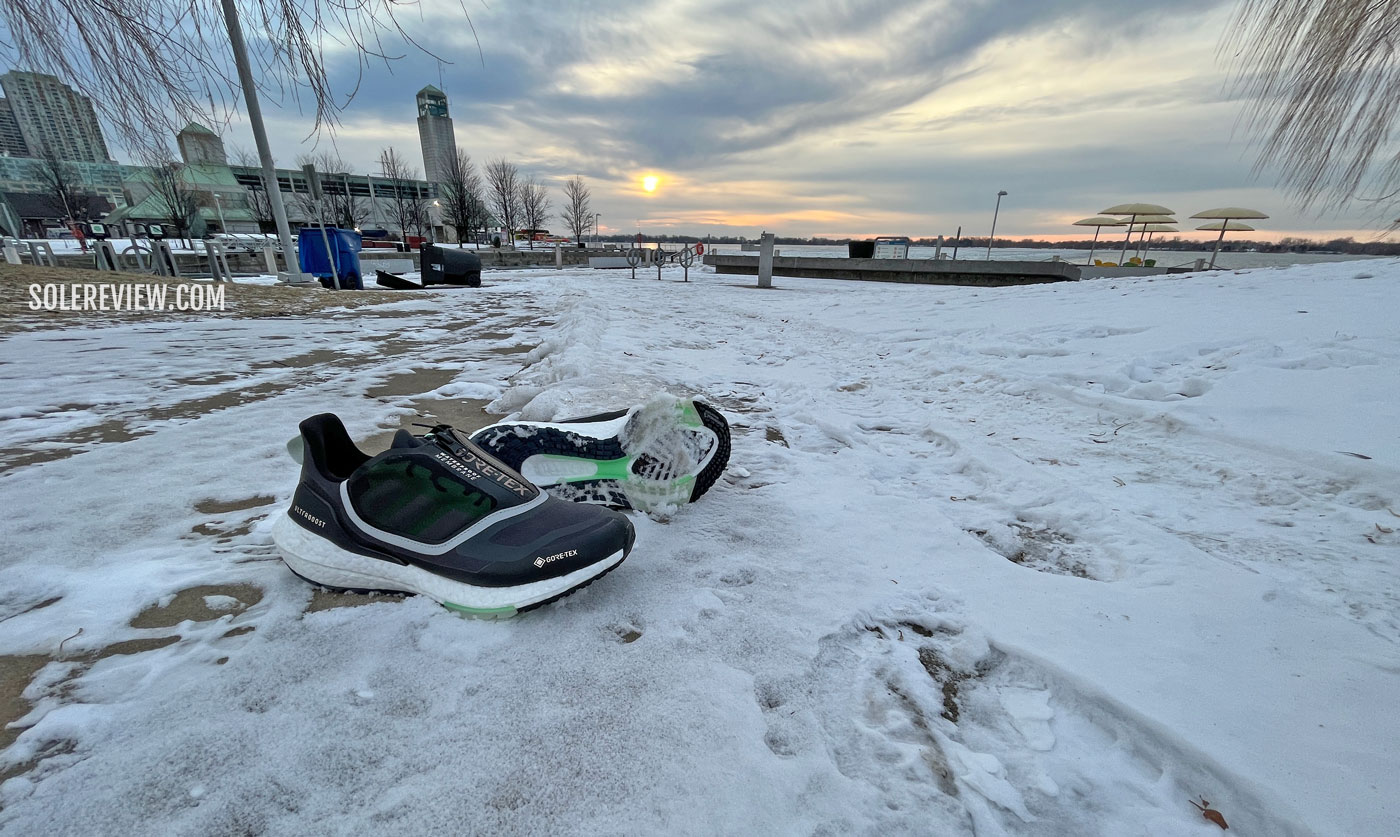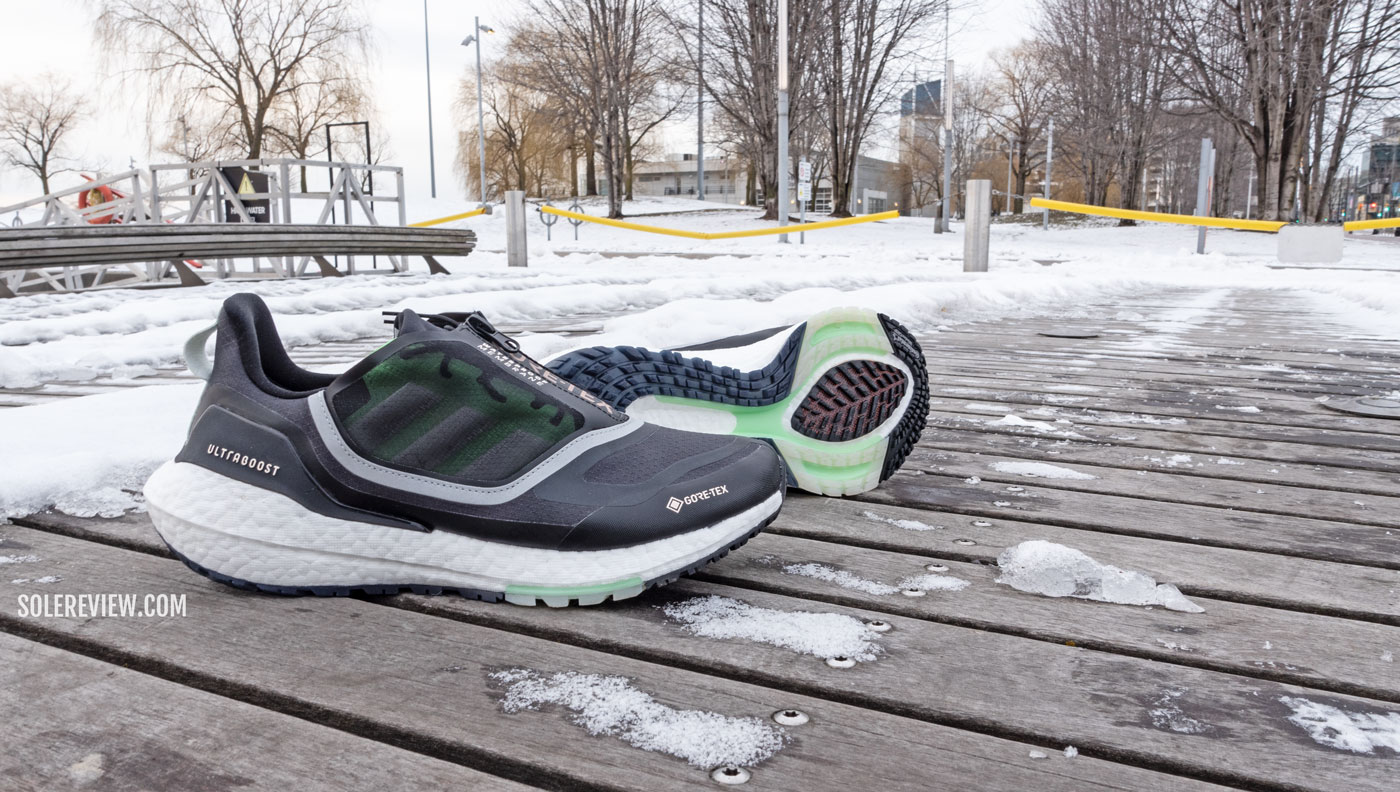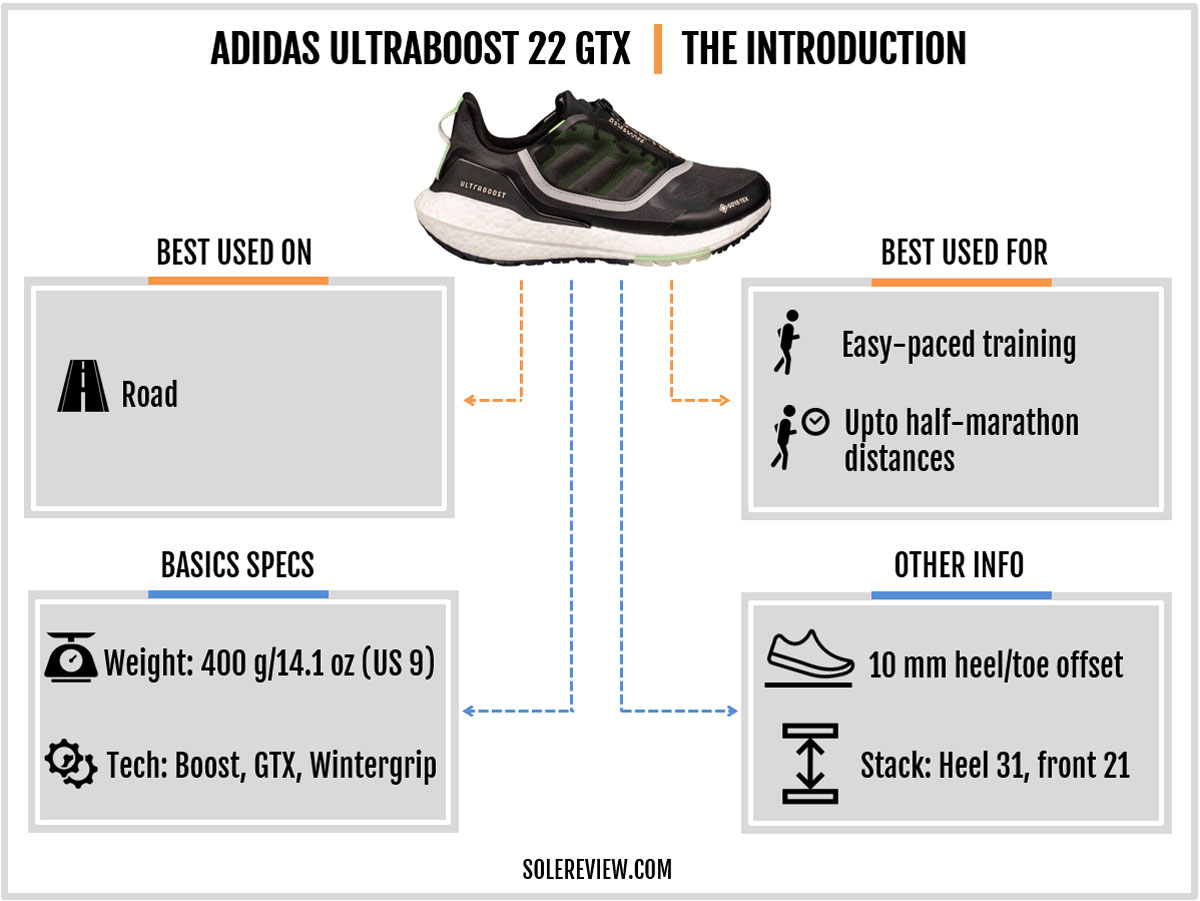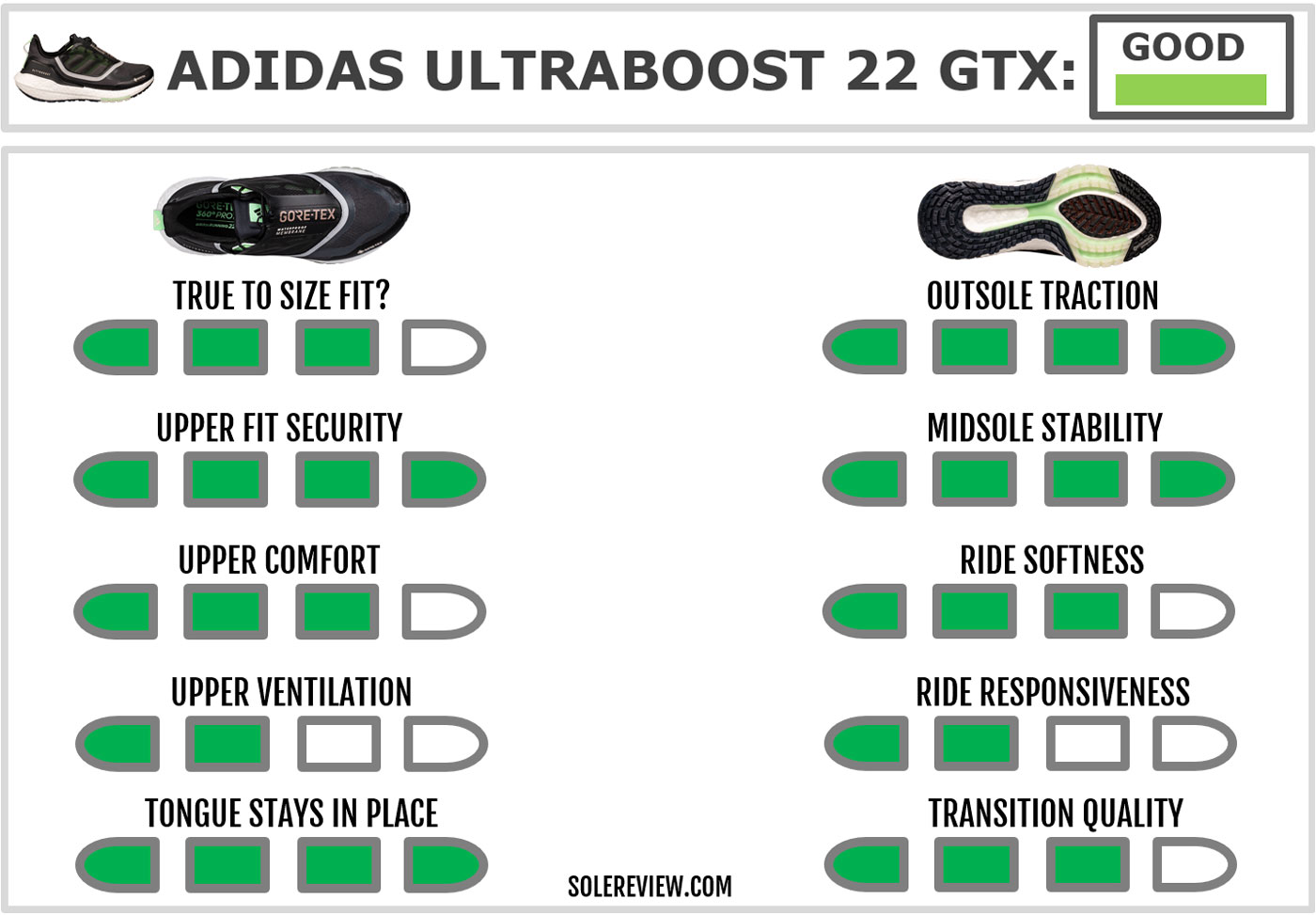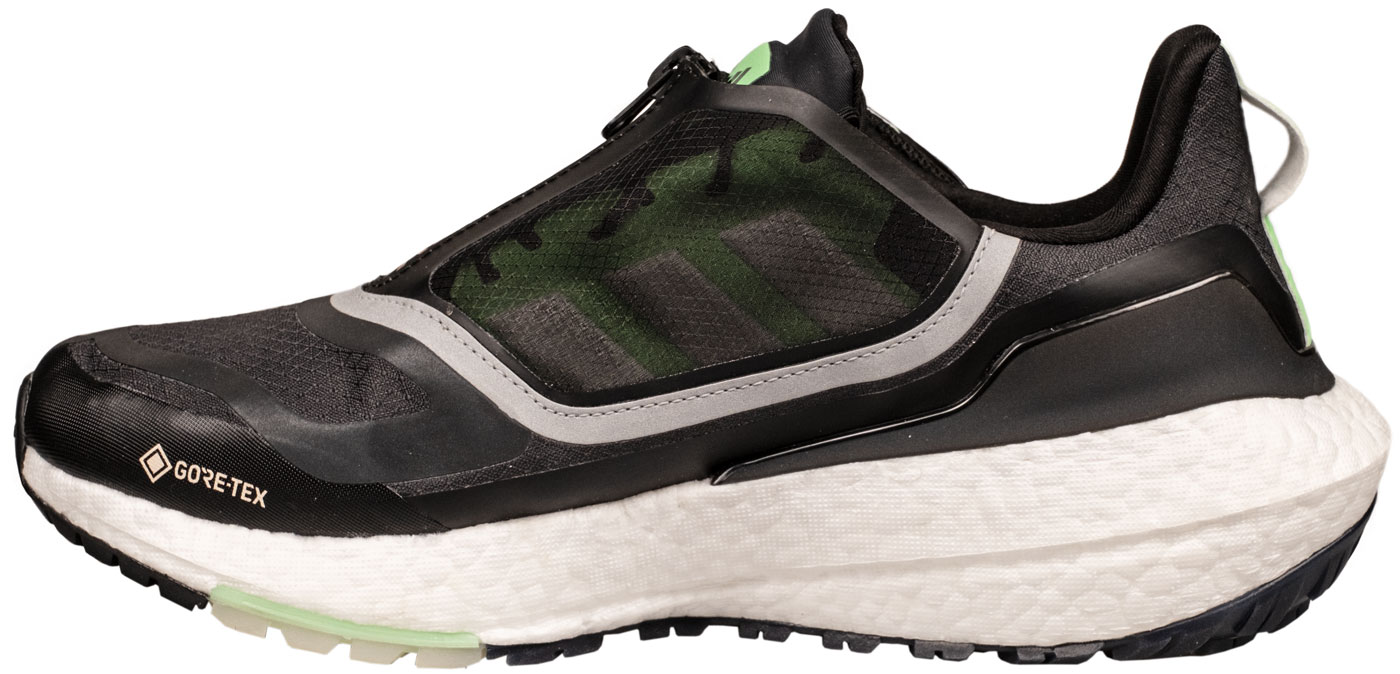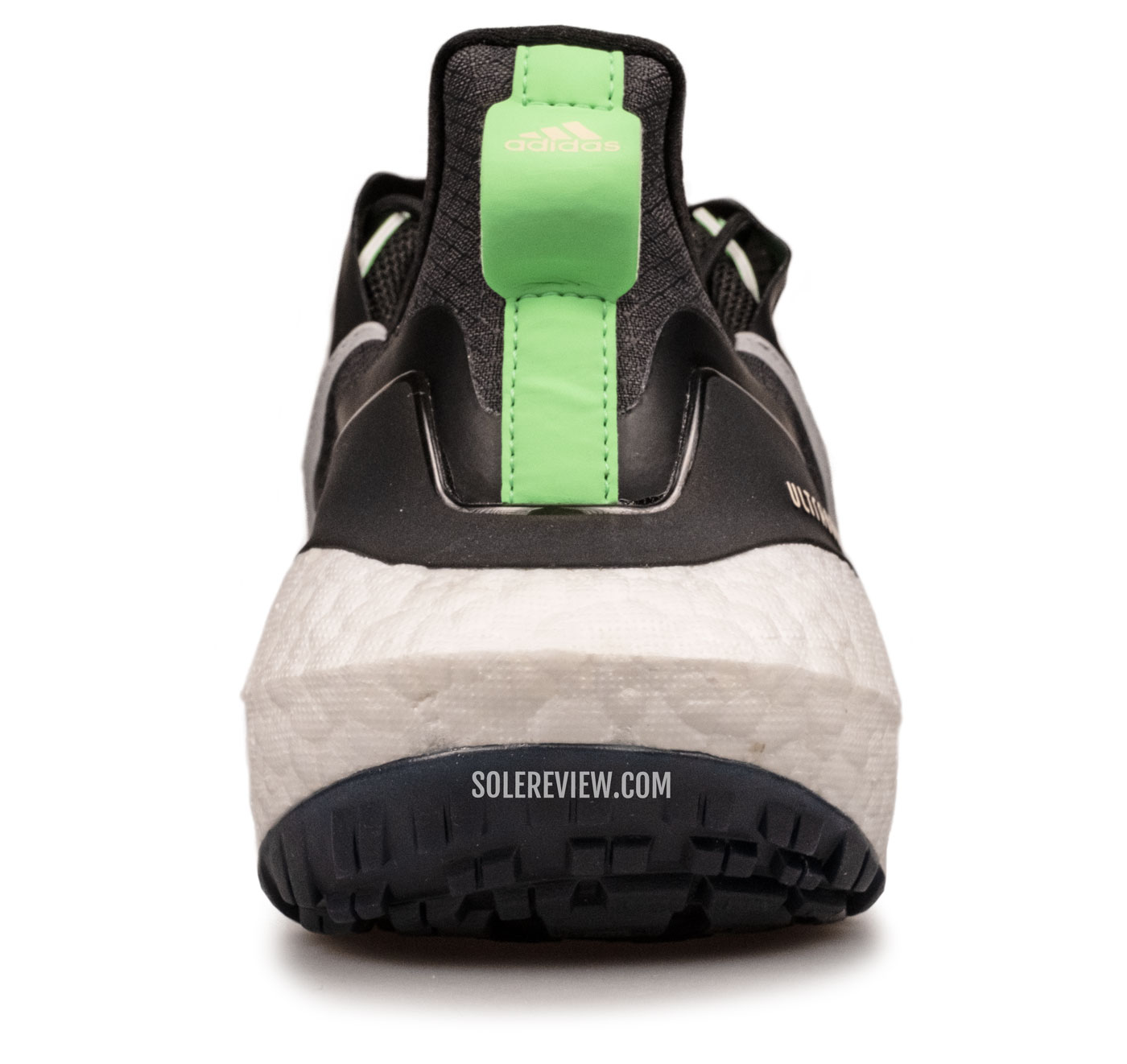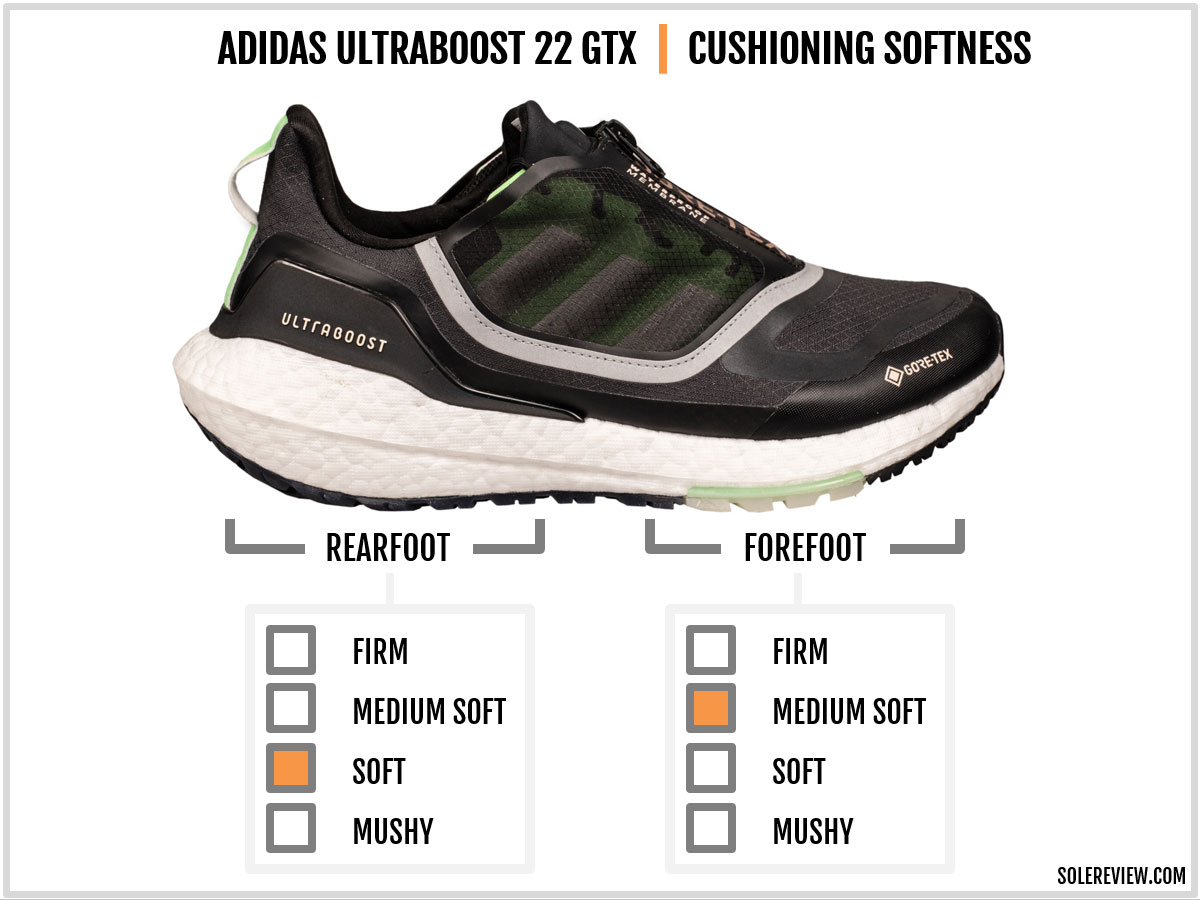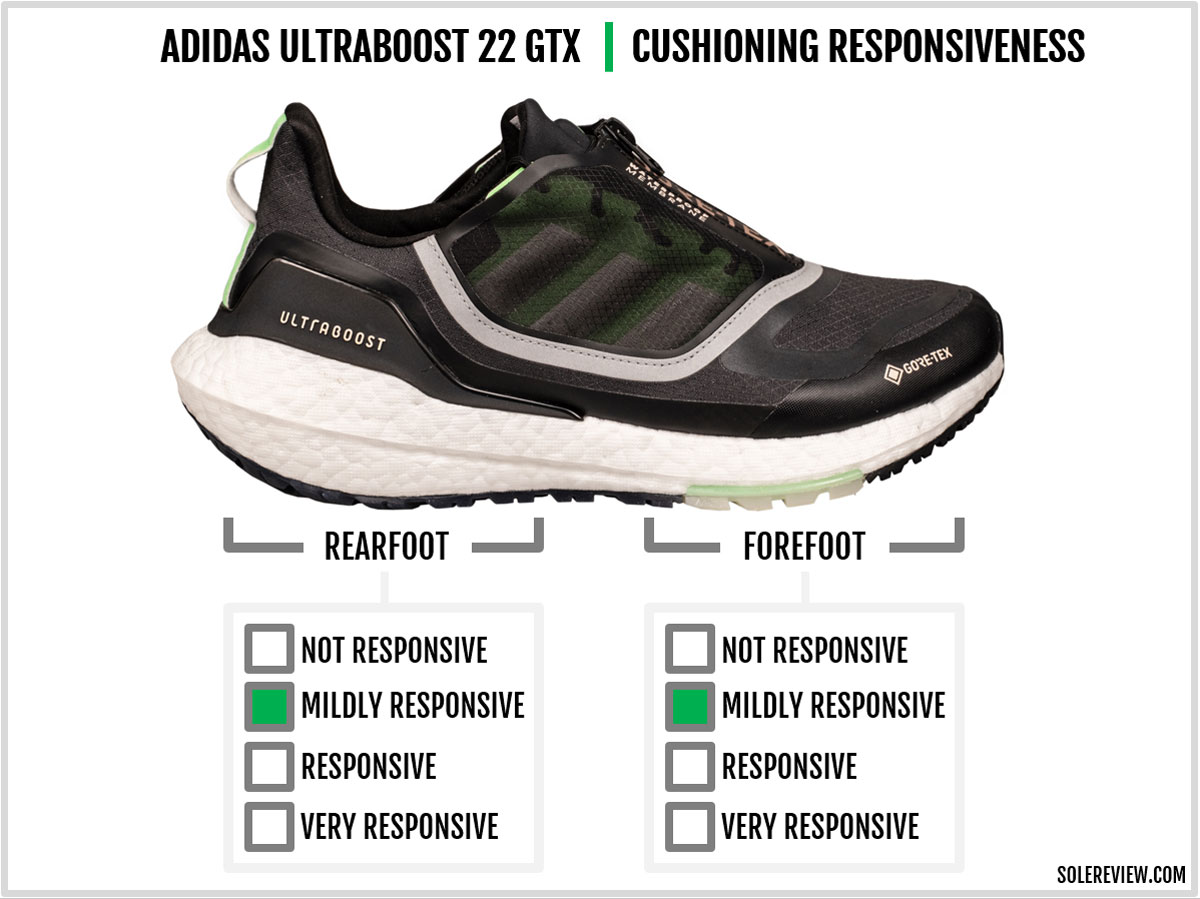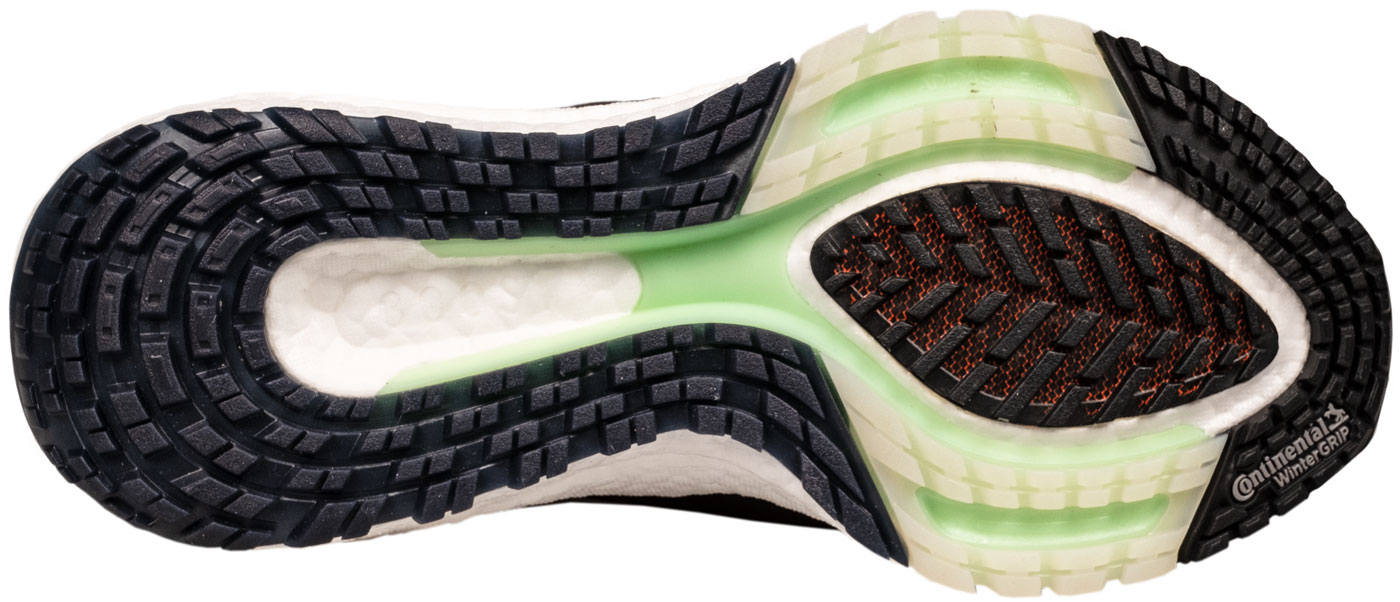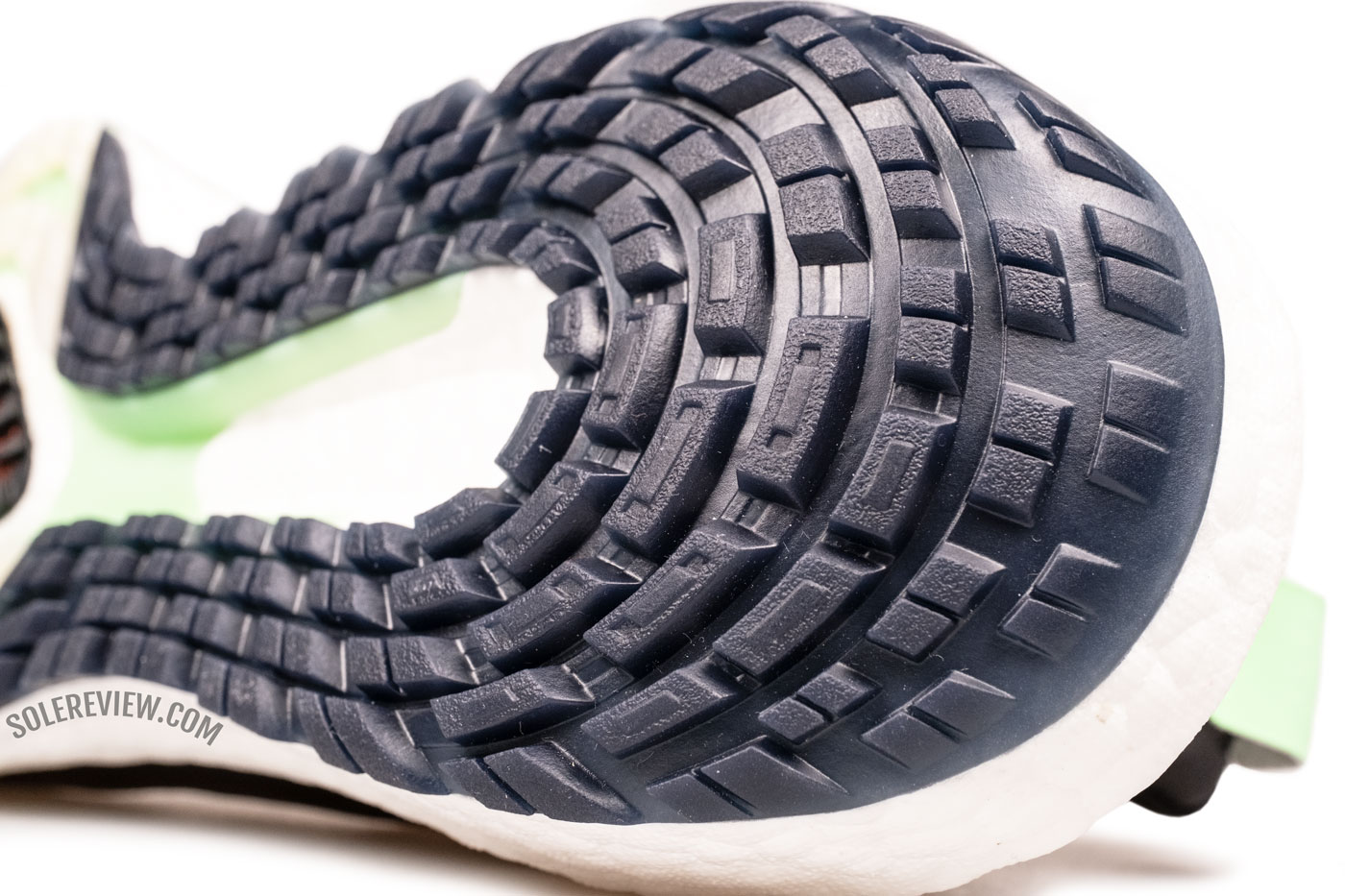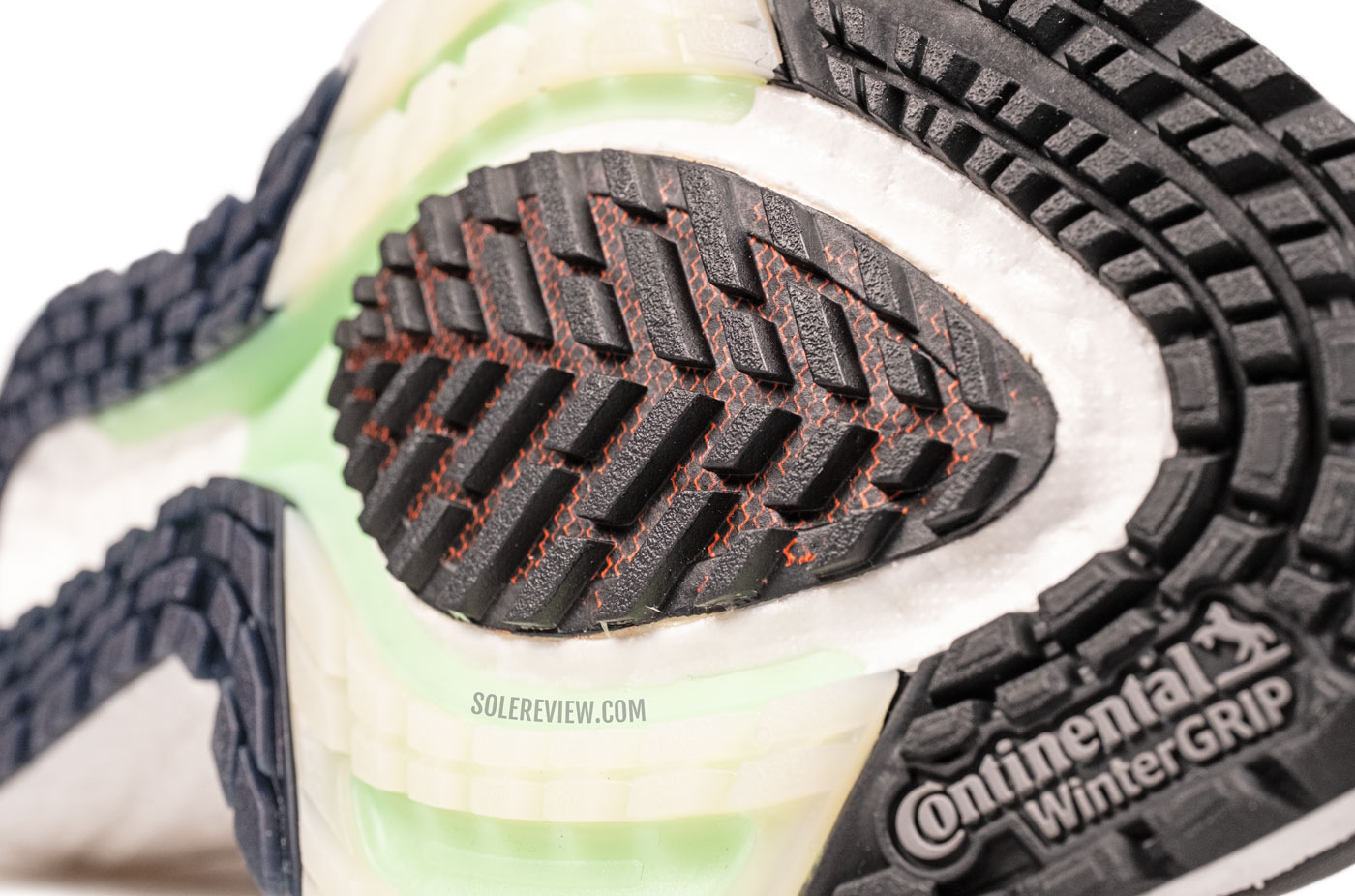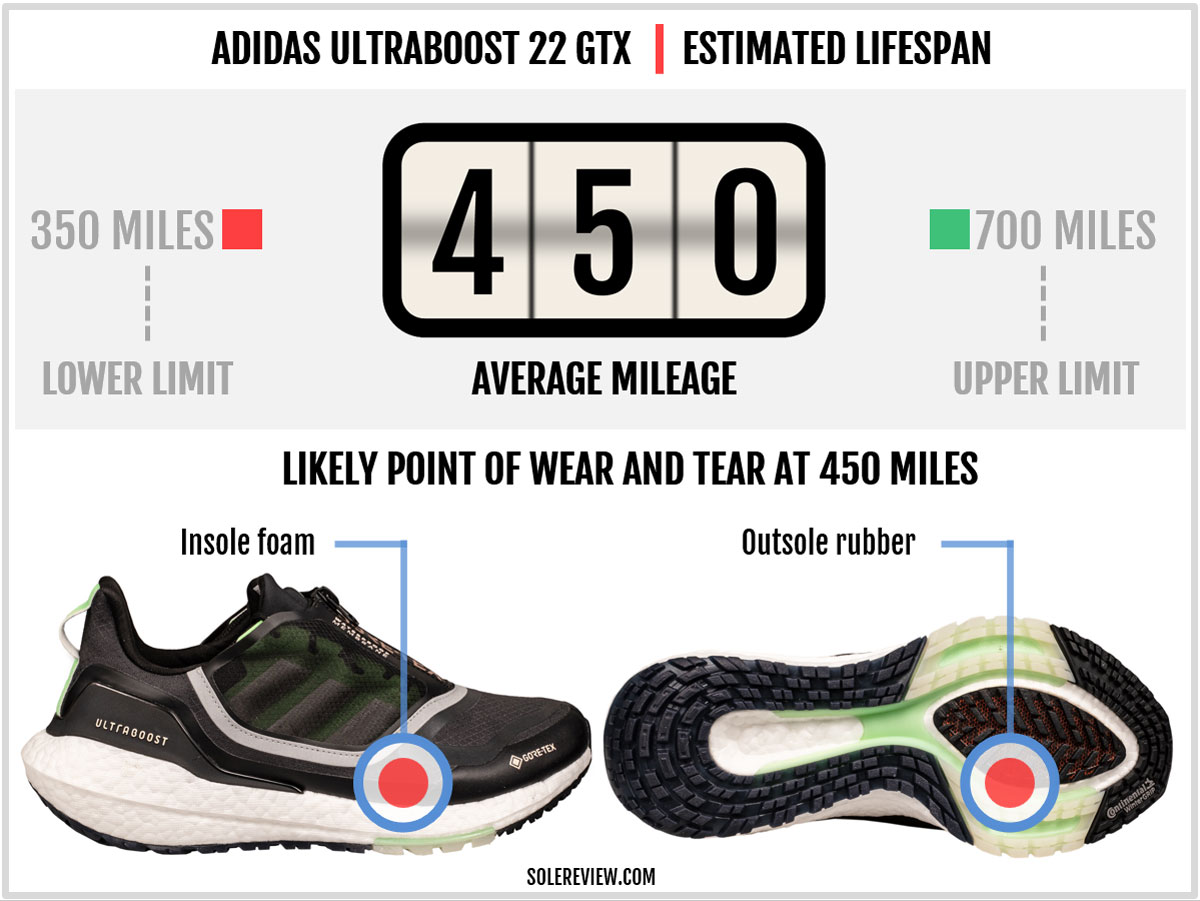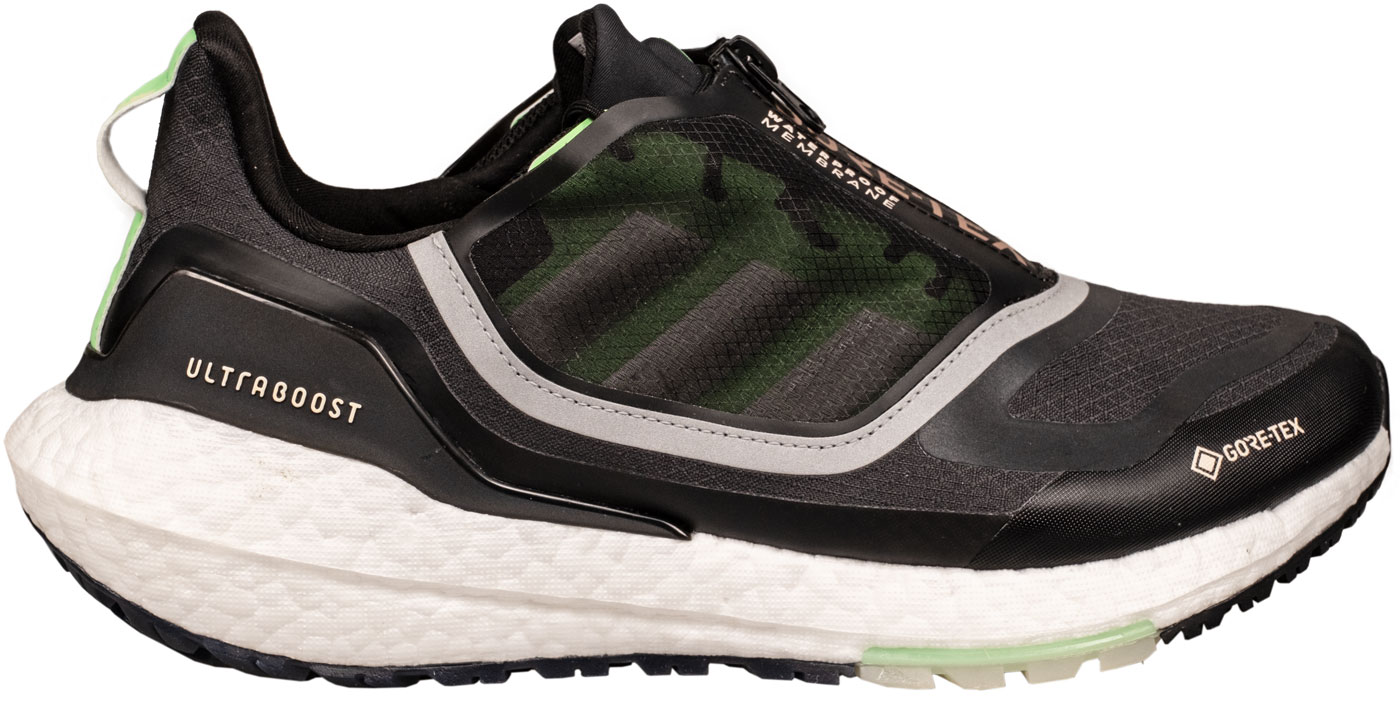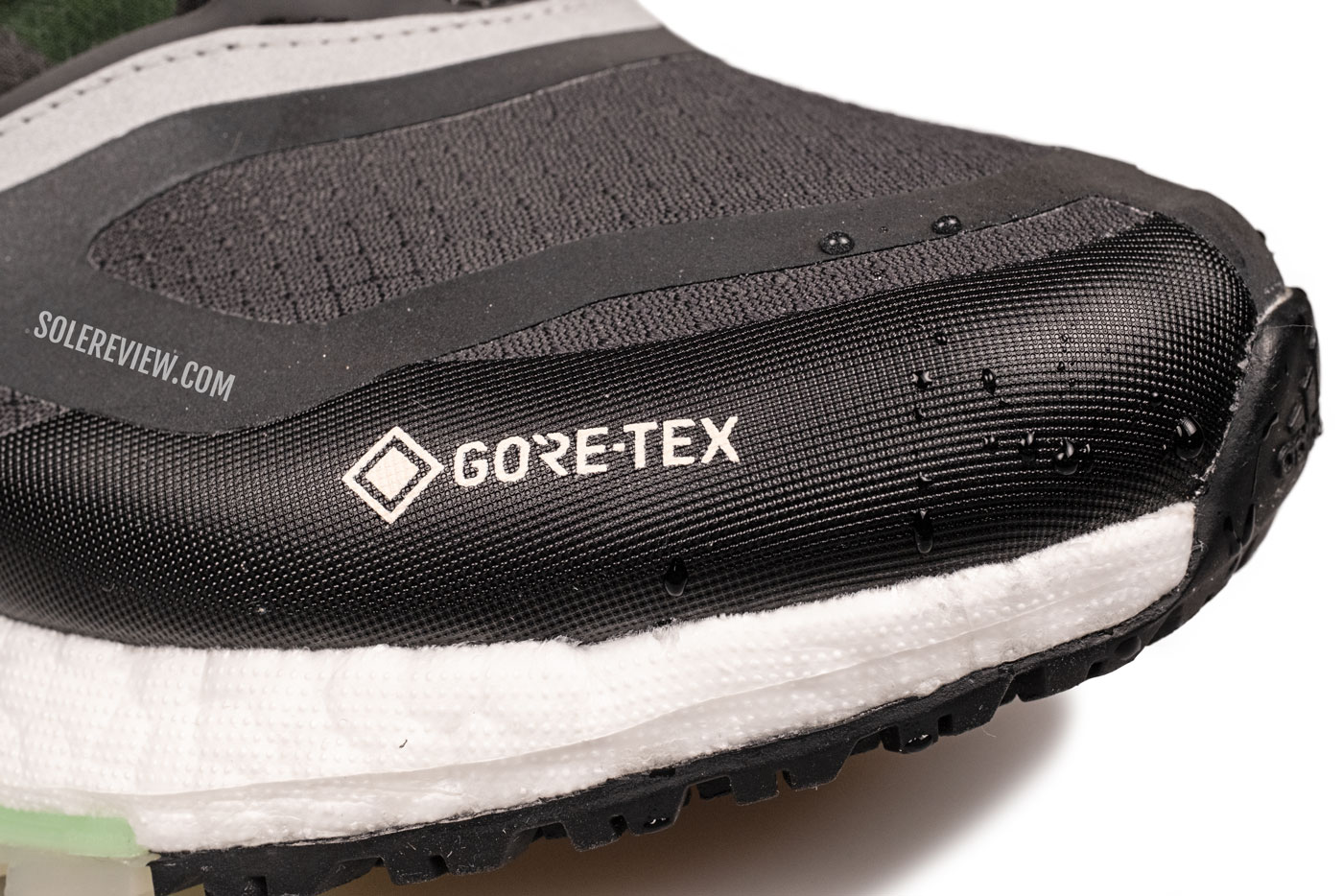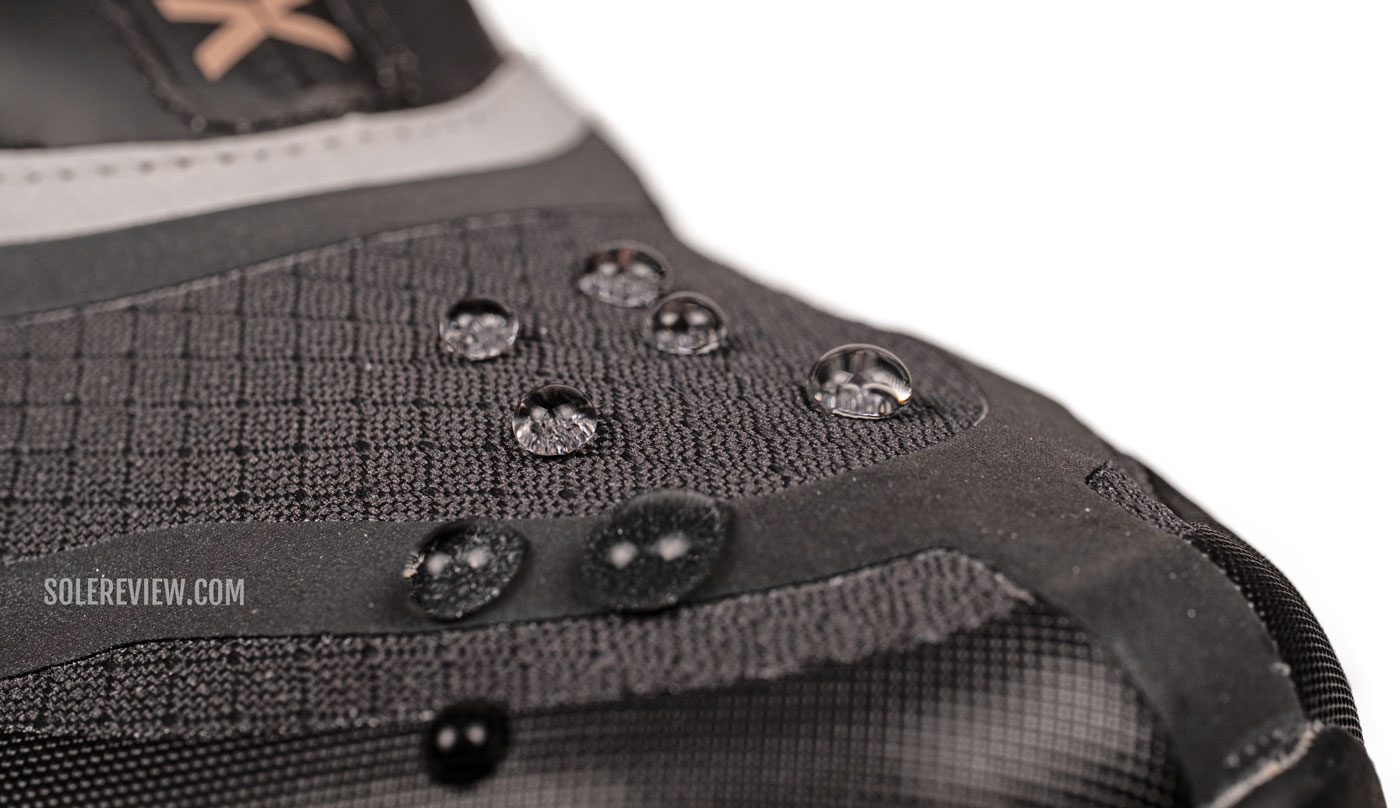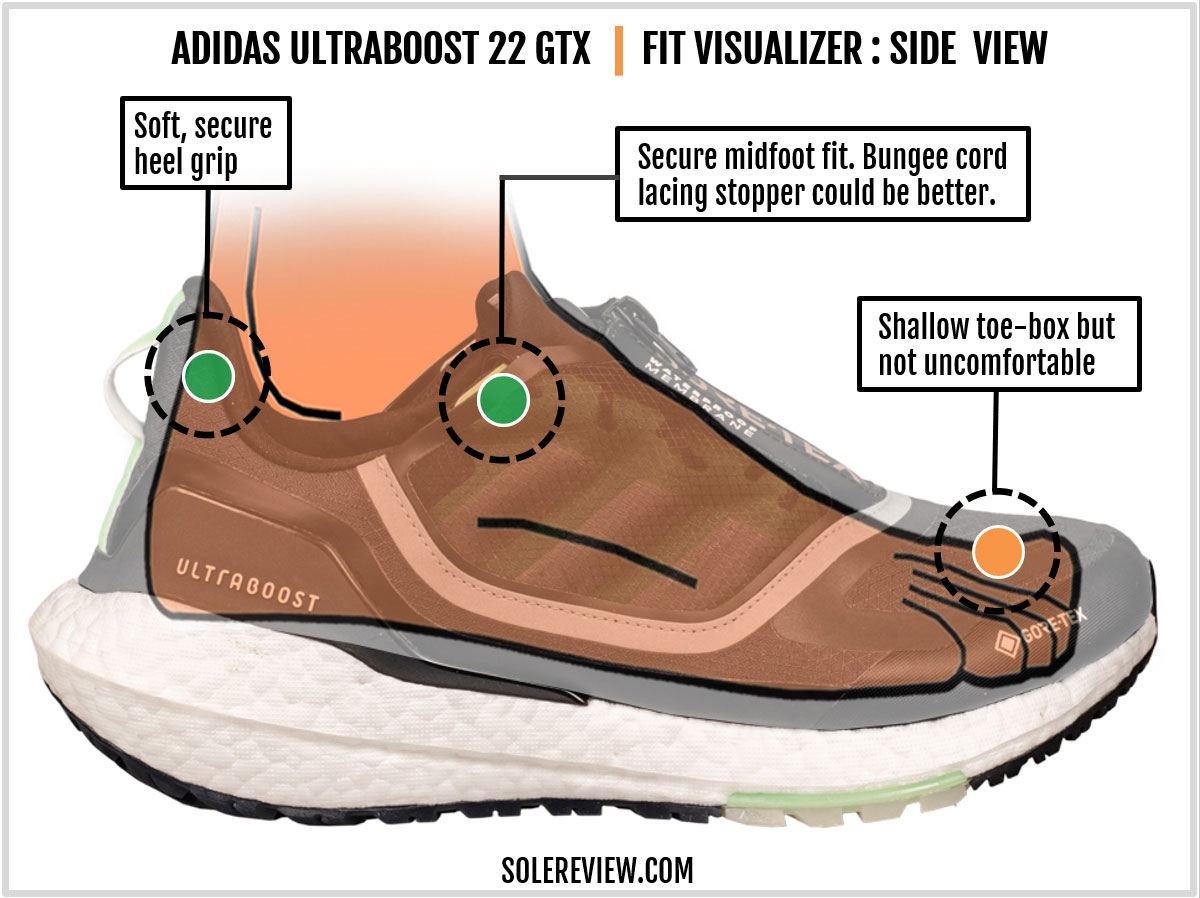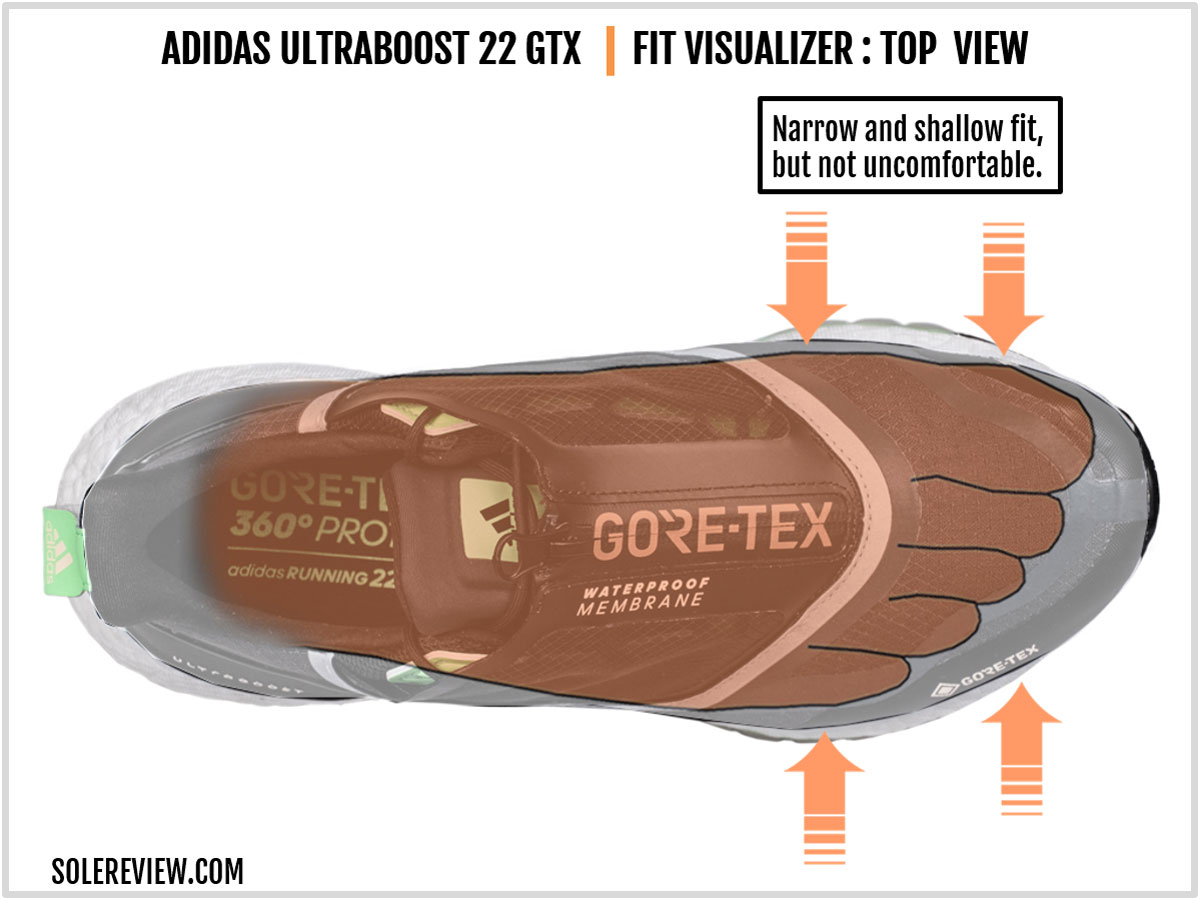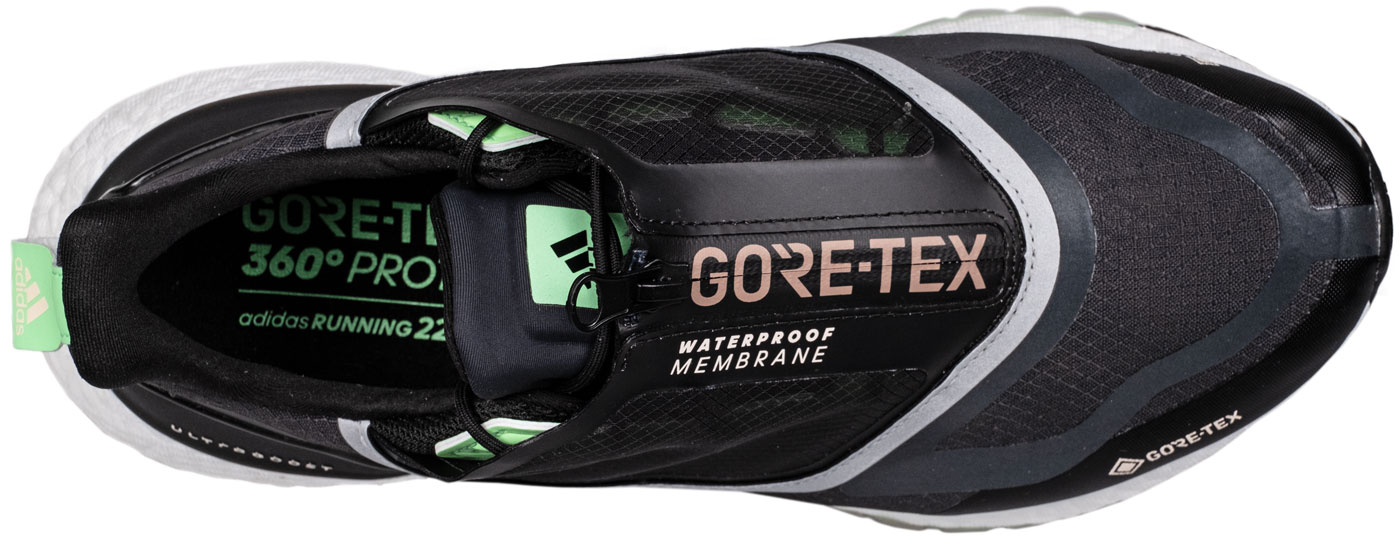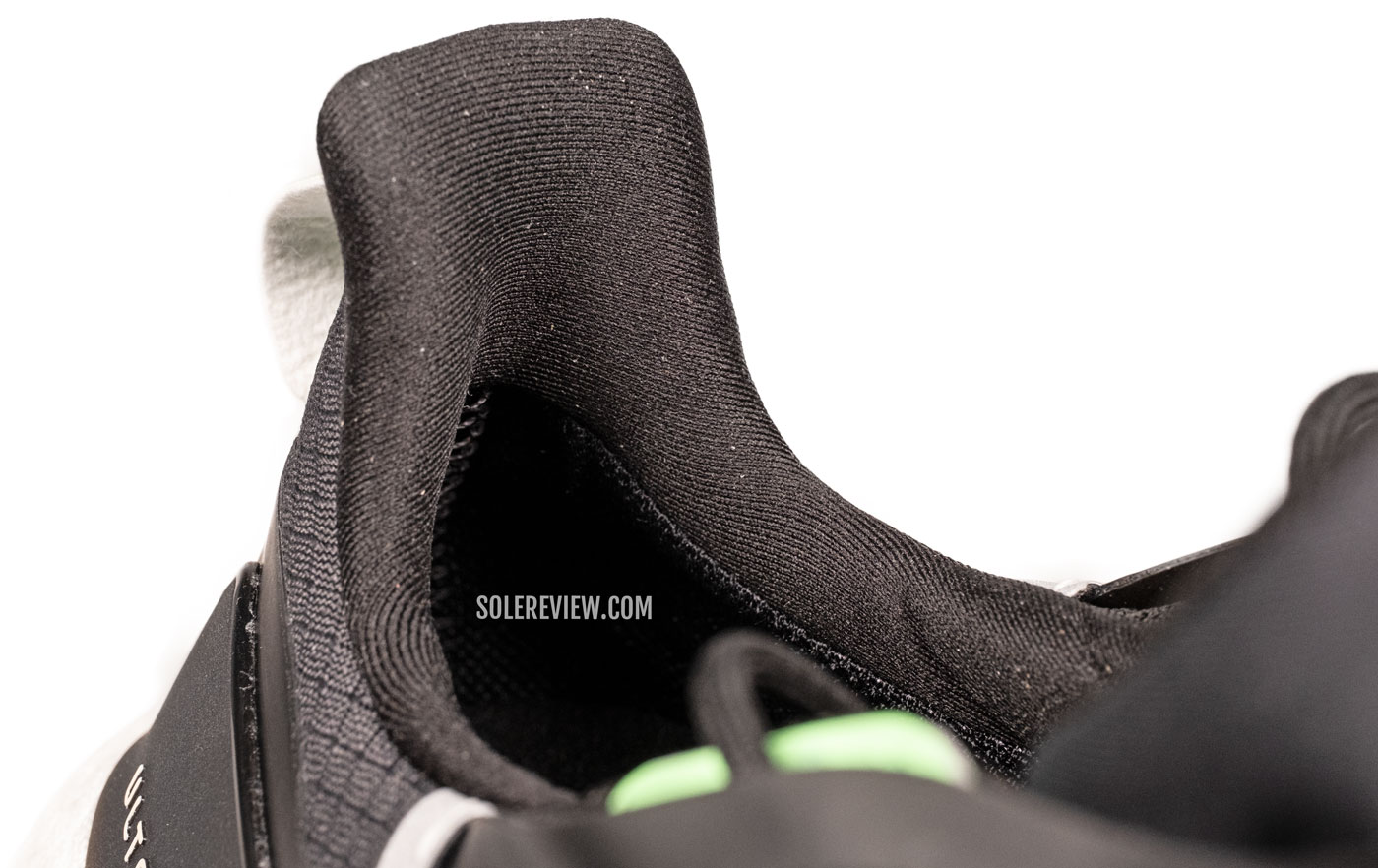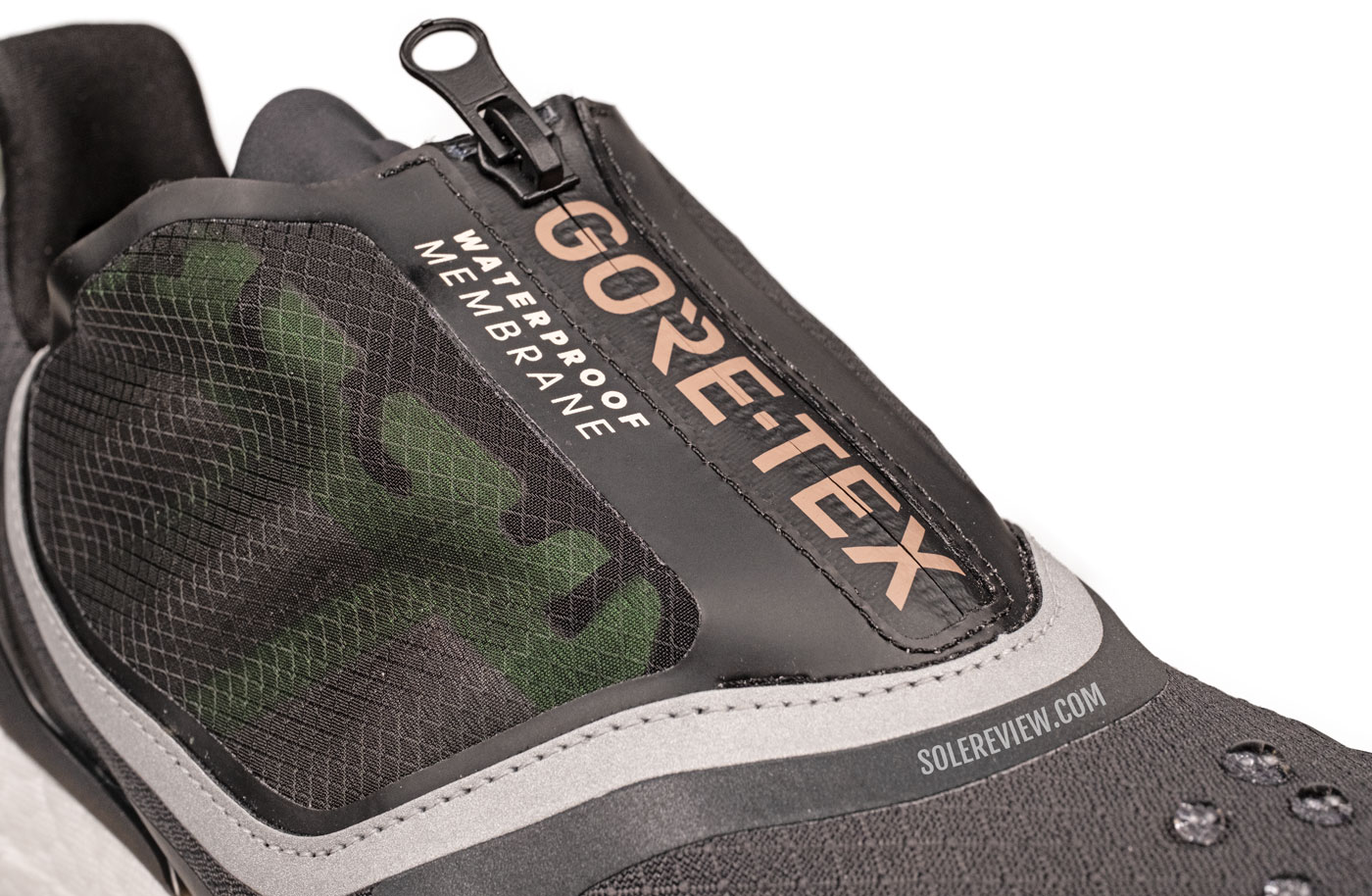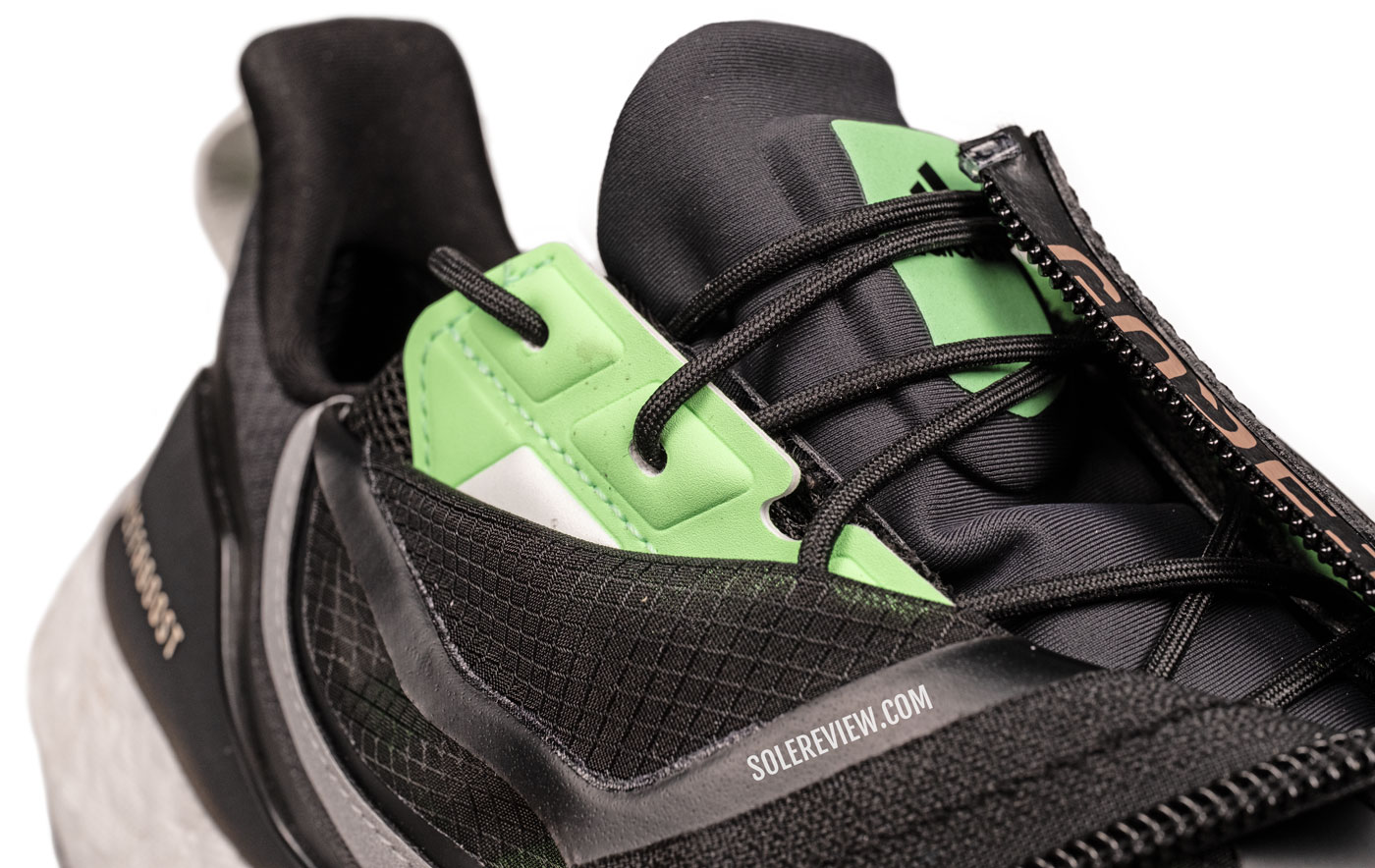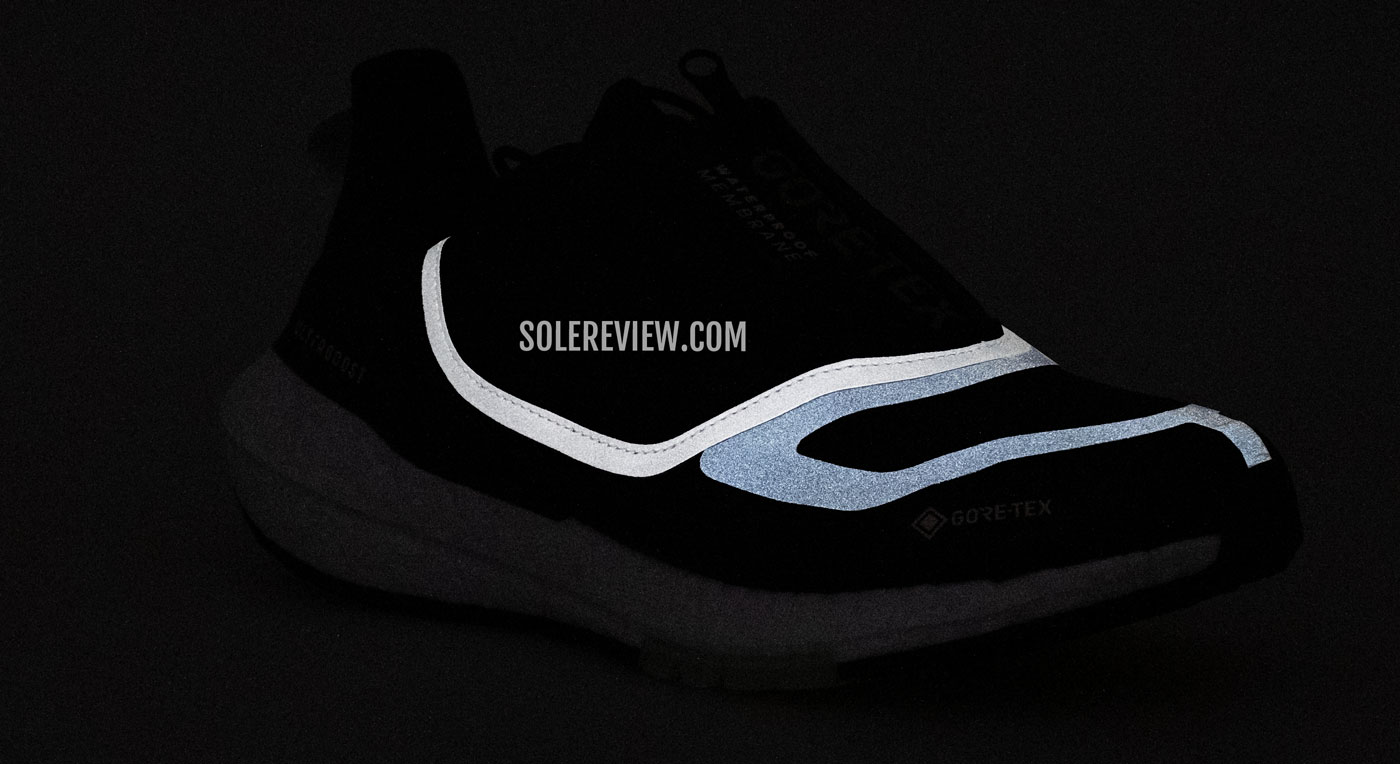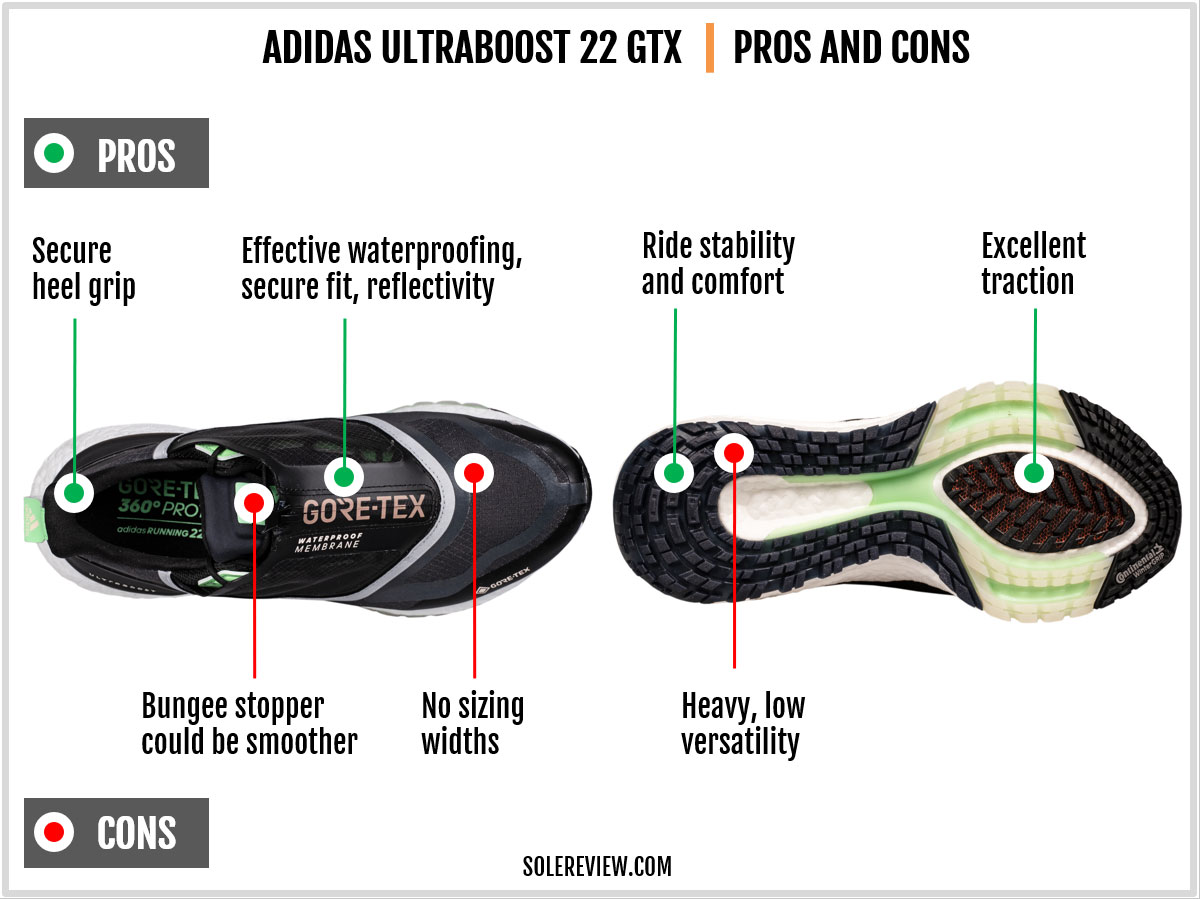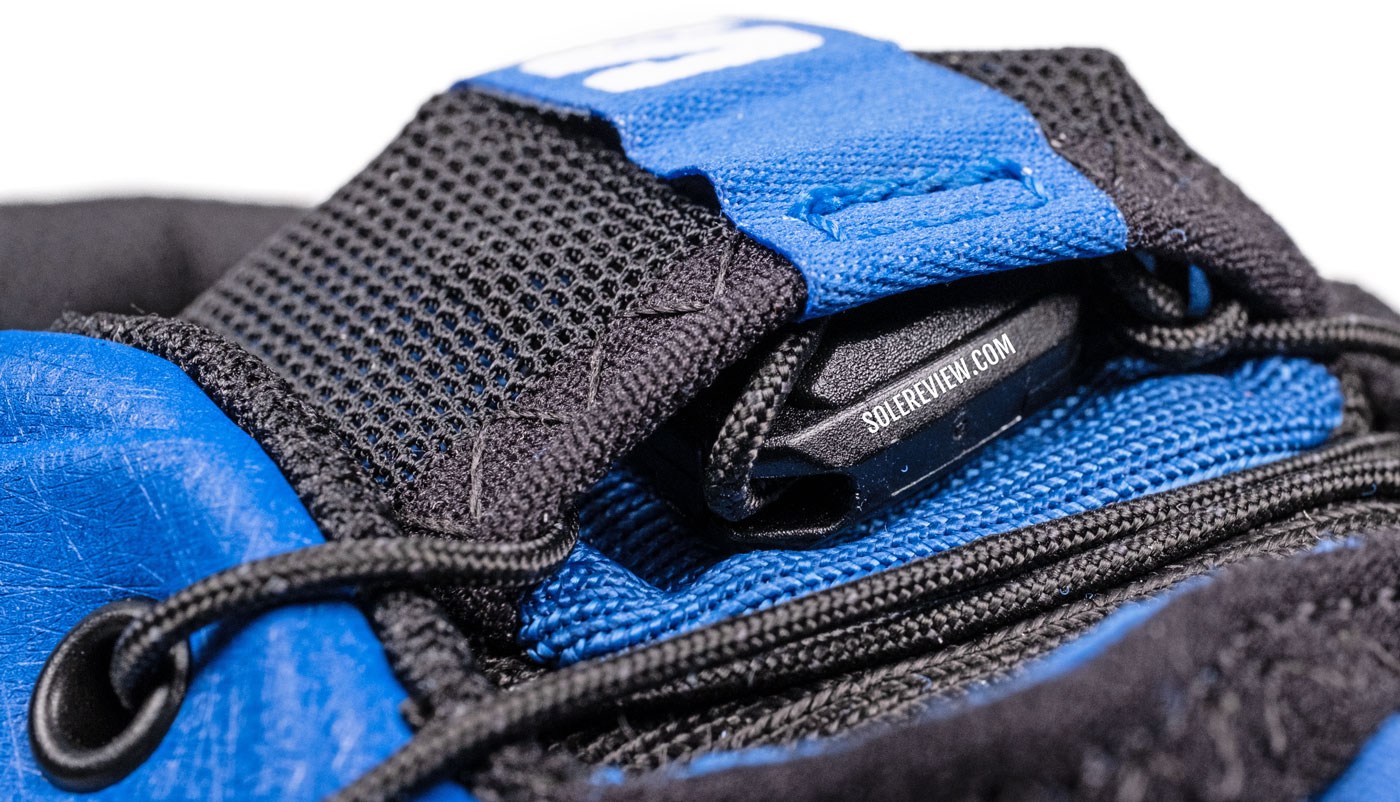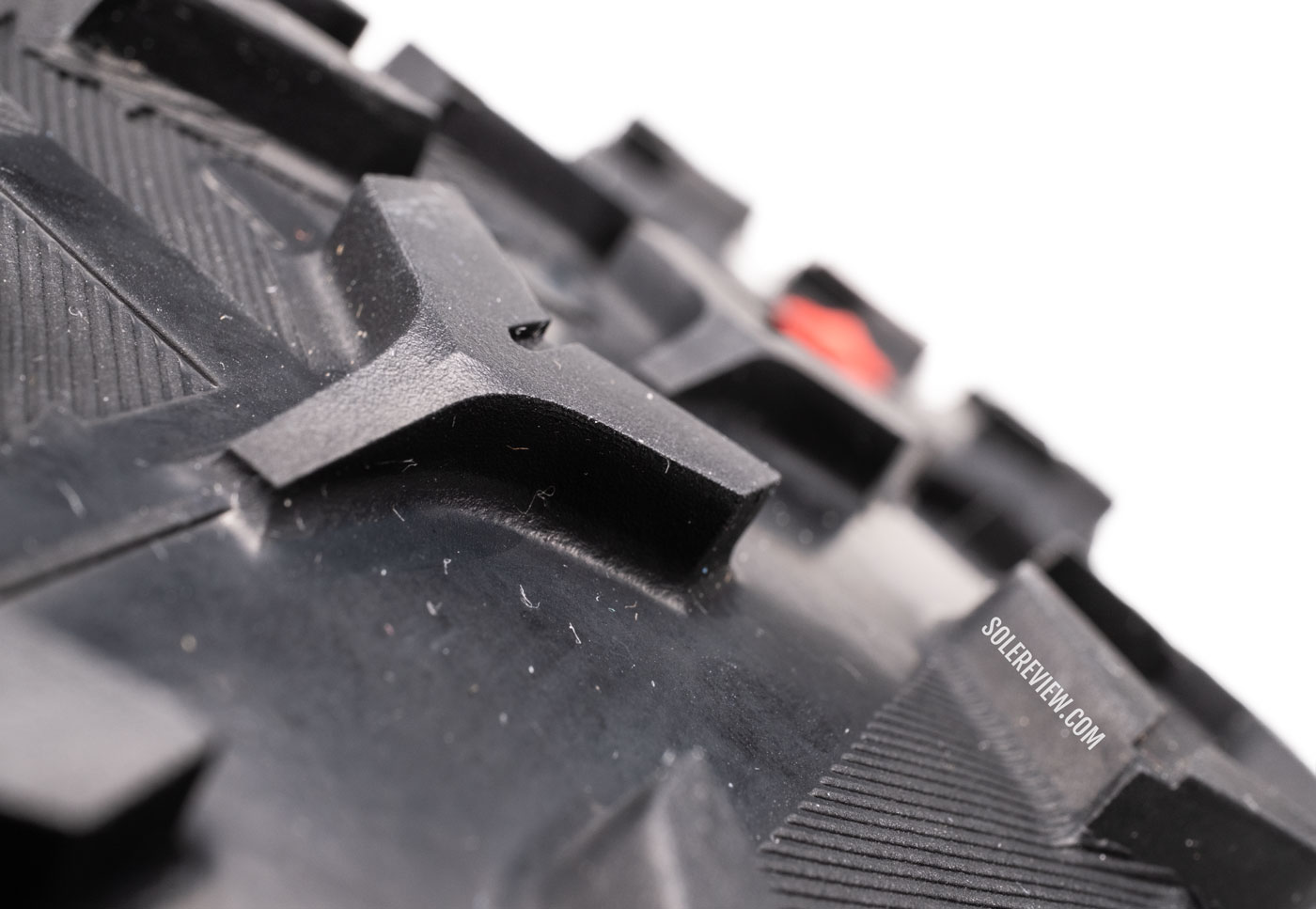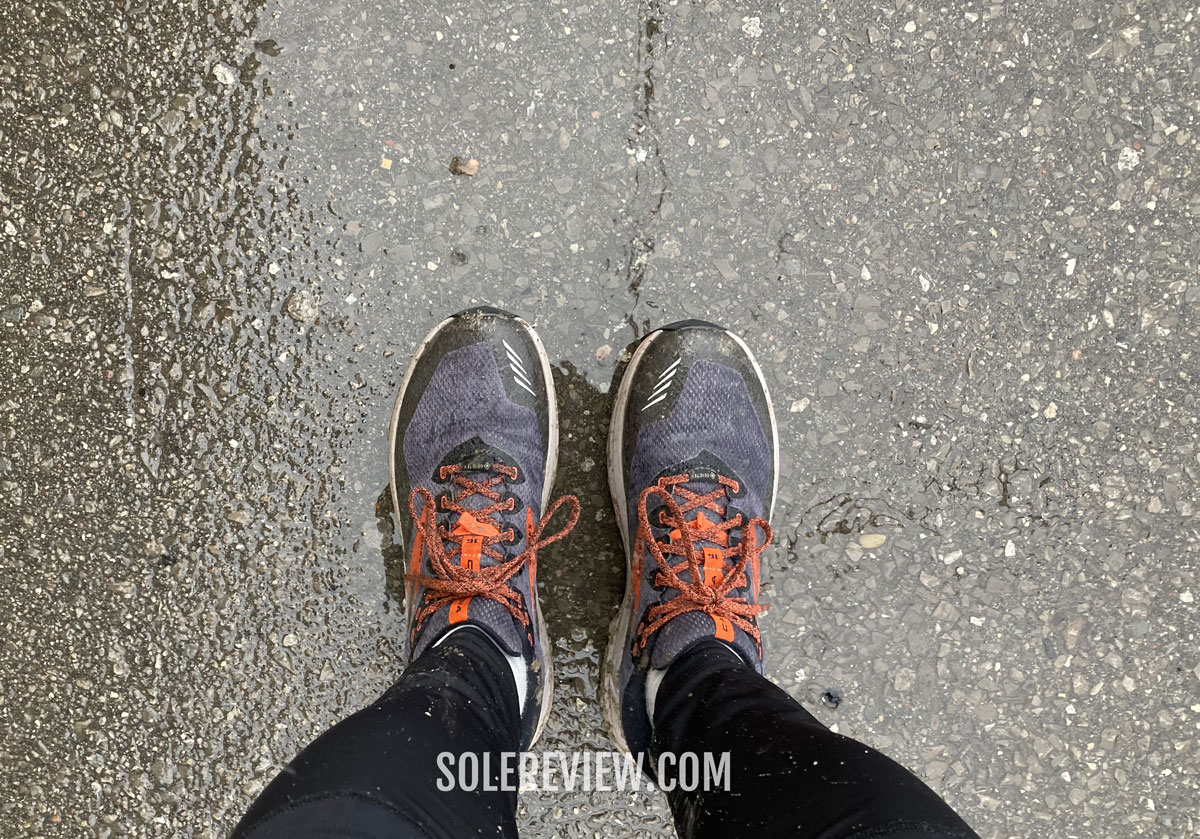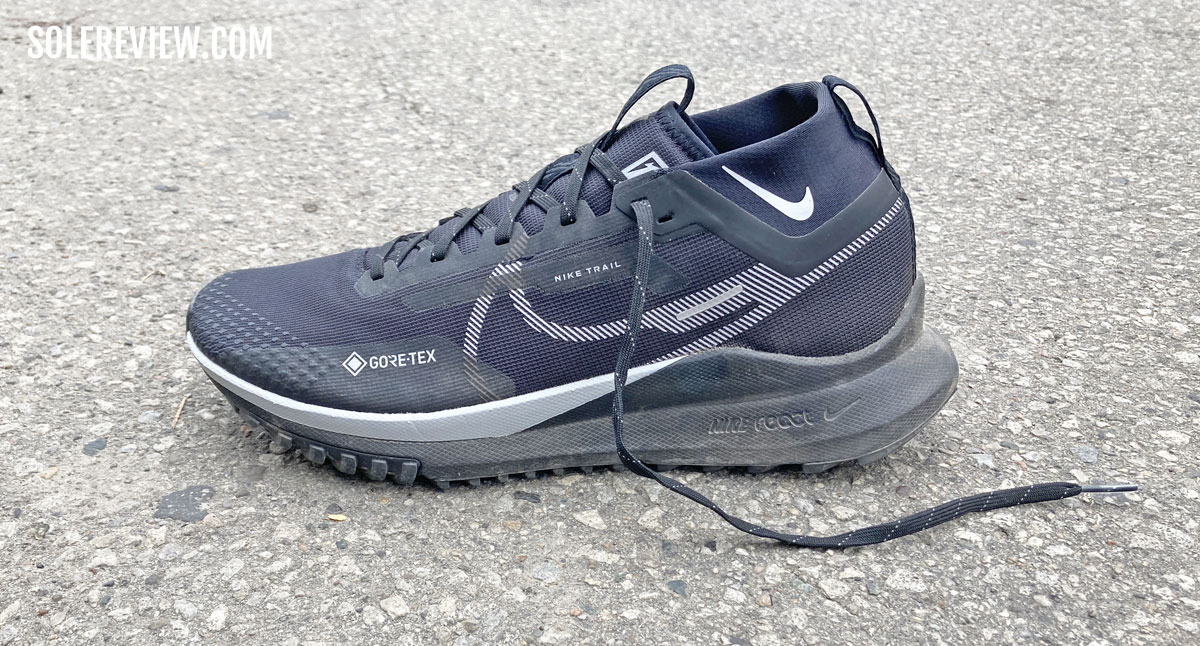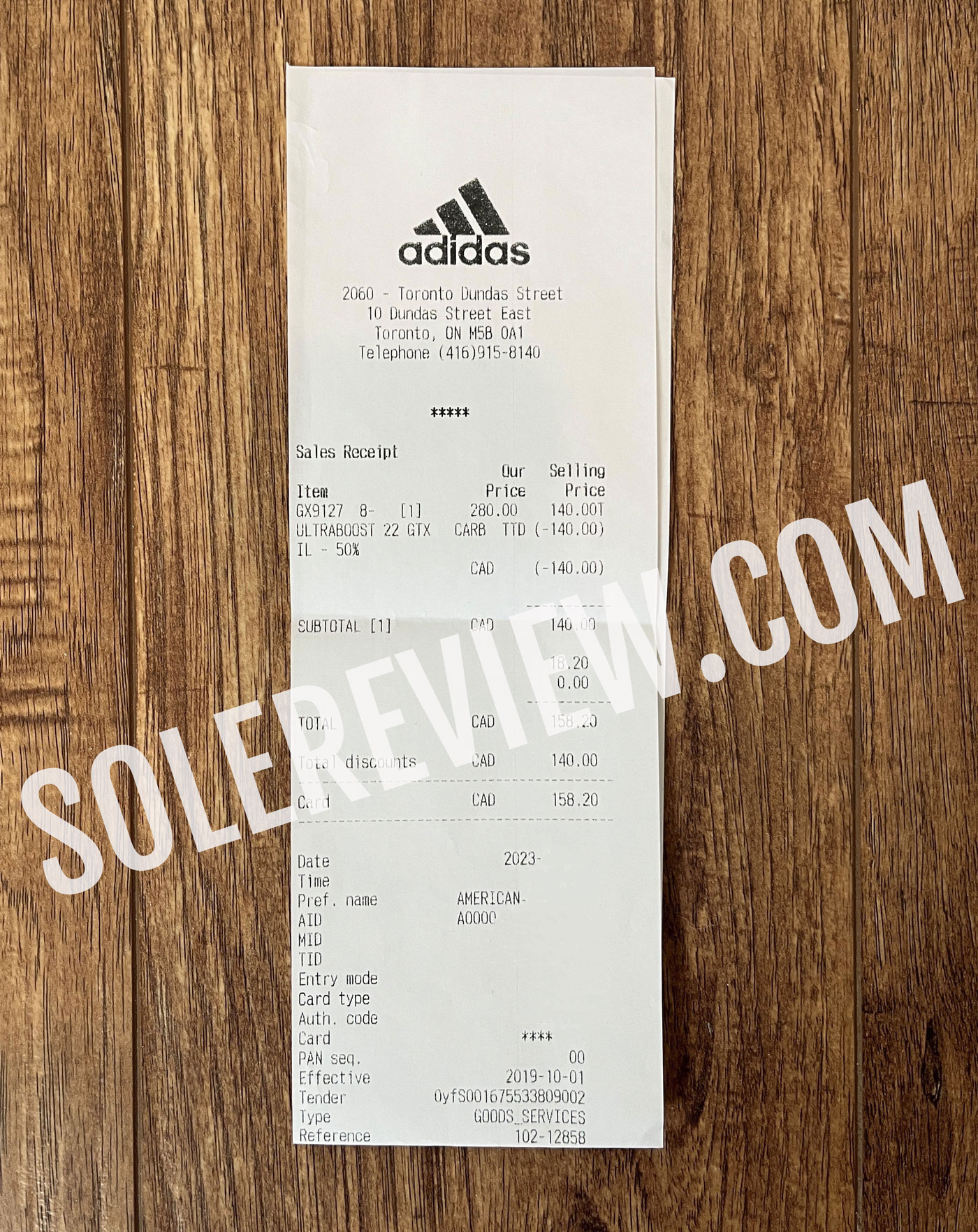
The adidas Ultraboost 22 GTX was purchased with our own money for the review. The amount is in Canadian Dollars.
In this review:
SUMMARY AND VERDICT
The waterproof (Gore-Tex) variant of the adidas Ultraboost 22 features in many of our buyer’s guides, so this shoe deserves a separate review.
This shoe shares the same name with the standard Ultraboost, but it’s different in more ways than one.
Except for the plastic heel clip, the upper has nothing in common with the Primeknit mesh shell of the regular model. The rubber outsole uses Continental rubber, but it’s a different compound called ‘Wintergrip’. The deep lugs also have an aggressive design for better traction over damp pavements.
The only part that the Ultraboost 22 GTX shares with the non-waterproof model is the full-length Boost midsole. Exception for the superior outsole grip, the UB-22 GTX’s ride quality is identical to the shoe that we reviewed over a year ago.
Here’s a quick summary of what this shoe is – the Ultraboost 22 GTX is a waterproof sneaker that works best for everyday casual wear and easy runs. This shoe weighs over 14 ounces, so its clunky feel reduces its versatility.
There’s more; the adidas Ultraboost 22 GTX is a very capable shoe for winter conditions and rainy days. The Gore-Tex waterproofing is very effective, and there are several thoughtfully-designed features that are not found in most shoes of its class.
THE MIDSOLE DESIGN AND RIDE EXPERIENCE
Our review of the non-GTX Ultraboost 22 covers the ride character in great detail, so we’ll be brief here. And if you already own a pair of the other Ultraboost, feel free to skip most of this section.
The Boost midsole is a straight lift from the other model, so we get a full-length Boost stack along with the LEP shank. The Boost foam is neither too soft nor too firm, so the ride comfort is served with a high level of stability.
The midsole sidewalls have an exaggerated height – meaning they appear higher from the outside than the actual thickness.
This is the Ultraboost, so the plastic heel clip on the upper has a significant role in the midsole stability. It works in tandem with the raised midsole to create a ‘cupping action’ around the foot.
Also, the perforated lasting of the standard-issue Ultraboost is replaced by an opaque lasting fabric, presumably for weather-proofing purposes. This has a firming effect on the midsole cushioning.
The adidas Ultraboost 22 GTX has a heel-to-toe drop of 10 mm with rear and forefoot stack heights of 31 mm and 21 mm. Understandably, the heel feels very cushioned – and even the tapered forefoot isn’t lacking in comfort either.
The removable insole is the same as the non-GTX version. Also, the expanded PU foam (Boost) operates well in freezing temperatures when compared to EVA-based midsoles.
At over 14 ounces, this is a very heavy shoe, so it’s not versatile under a variety of situations. For example, the Ultraboost 22 GTX feels cumbersome at even speeds of 5 min/km (8 min/mile).
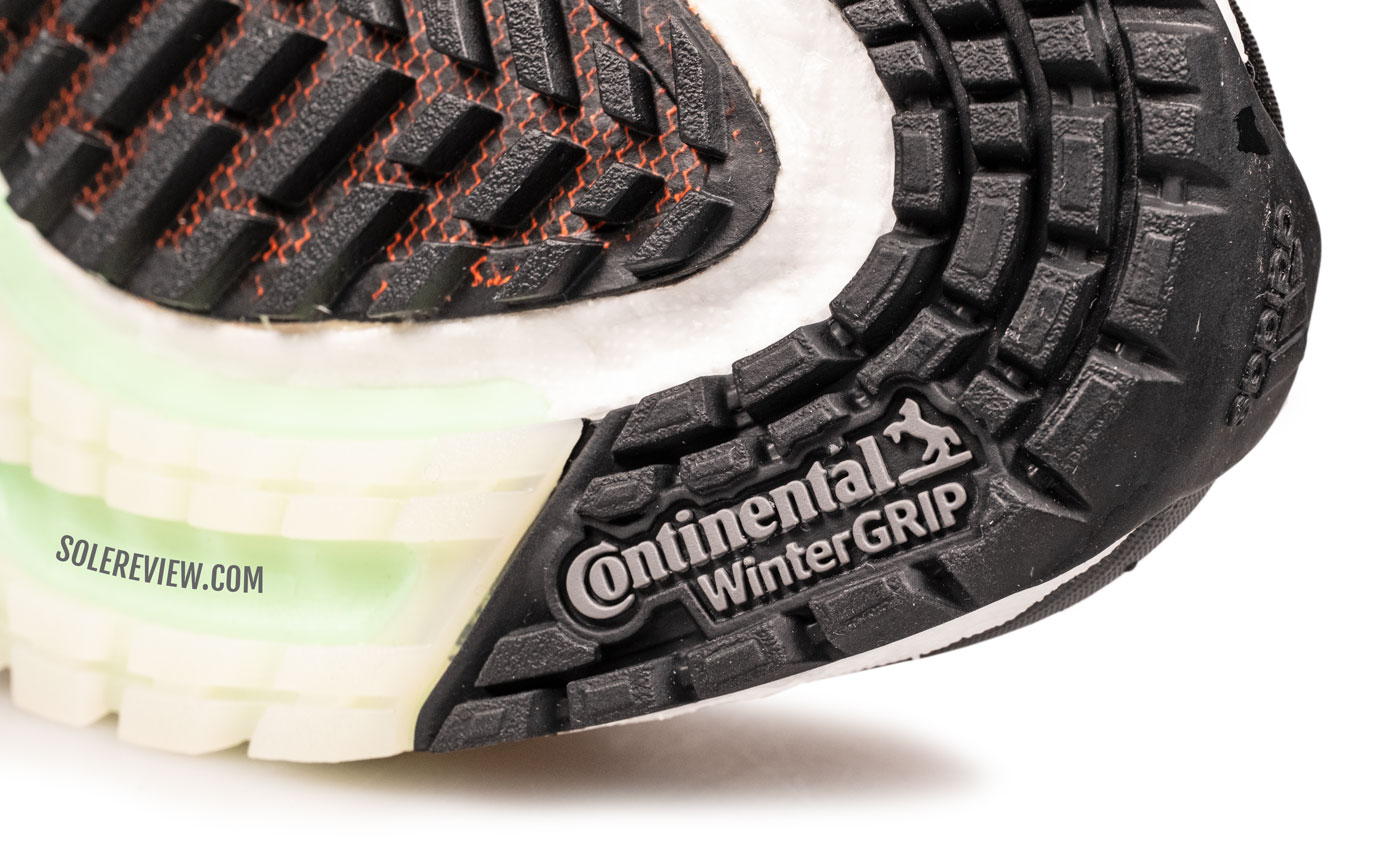
A sticky rubber compound and aggressive lug pattern add functional value to this cold-weather outsole.
However, this works very well during slow winter runs on slushy and damp surfaces.
This model comes equipped with a very aggressive outsole design that’s ideal for wet weather. Short of icy surfaces, the Continental ‘Wintergrip’ rubber outsole delivers an excellent grip.
It’s not just the specialized rubber compound; the traction delivered by the highly-defined lugs even outperforms Nike’s Stormtread outsole that’s used on the Pegasus Shield.
Naturally, given the relatively shallow lugs, the outsole works best on wet or thin slush. Like most outsoles, running on a blanket of snow will not produce an optimal outcome.
Hard ice is off-bounds, and so are trails. The lugs are densely clustered, so running on muddy trails will clog the outsole. If you intend to run on the trails, we have recommended alternatives at the end of this review.
Even though the lugs have the same layout as the standard Ultraboost, the aggressive lug structure makes all the difference. The forefoot outsole piece looks as if it belongs on a racing flat – in a nice way. The sharp lugs are mounted separately on the outsole for a wider range of movement.
Unsurprisingly, the forefoot transitions feel more satisfying than the regular Ultraboost. The grippy lugs have a superior bite on the road, so the take-offs are more efficient.
But in the end, the Ultraboost 22 Gore-Tex works far better as a casual sneaker for winter use than a performance running shoe. It’s comfortable, stable, grippy, insulated, and waterproof – all the essential ingredients of a reliable sneaker for the wet and cold months.
IS THE ADIDAS ULTRABOOST 22 GTX DURABLE?
Like most Ultraboosts, this shoe should last north of 400 miles.
The Boost foam is good at resisting fatigue, so the cushioning doesn’t deteriorate over the life of the shoe. The lugs are sharper than what the non-GTX model uses, so the wear and tear will be more visible in the first few months.
The Gore-Tex upper and its zipped shroud is solidly put together, so that amounts to a durable build with low chances of material failure.
THE UPPER DESIGN AND FIT
Just one glance at the Ultraboost 22 GTX’s upper tells you where all that 14-ounce weight is coming from.
Unlike the regular Ultraboost, there’s no Primeknit mesh upper. Instead, what we have are layer after layer of weather-resistant meshes and reinforcements.
In the front is a fused toe-bumper over a waterproof ripstop mesh. There’s another strip over the toe box, and this happens to be reflective. If this pattern looks vaguely familiar, that’s because the 2014-15 Energy Boost had a similar overlay.
From a fit perspective, the toe box is narrow and somewhat shallow. This isn’t specific to the waterproof variant; most Ultraboost uppers fit that way. Nonetheless, we recommend going true-to-size.
The midfoot design is interesting. The insides have a fully operational lacing system that relies on non-elastic bungee cords and a plastic stopper.
On the outside is a shroud with a water-resistant zipper. The tongue and heel are padded in typical Ultraboost-style, so the upper is comfortable when the foot is locked in.
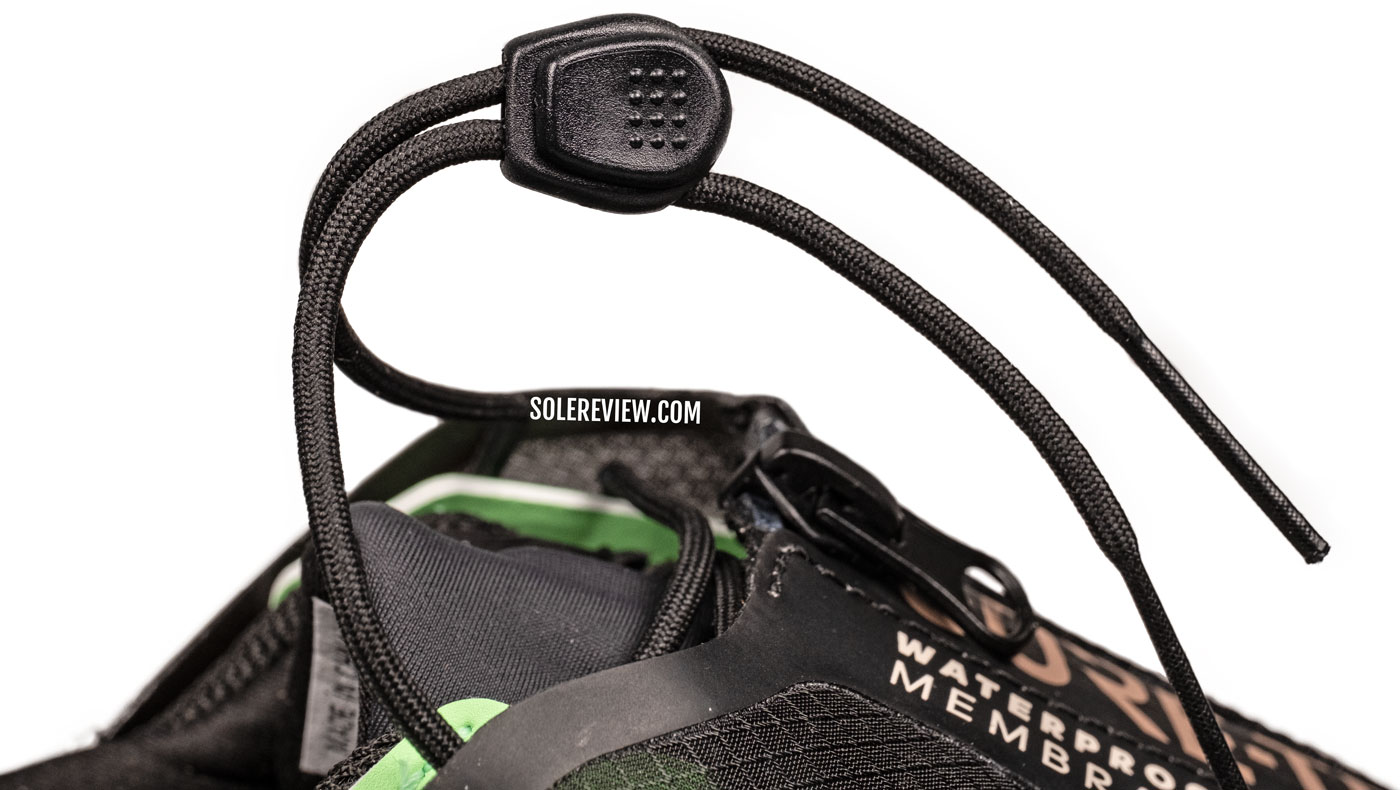
This is our least favorite part of the midfoot lacing system. The stopper isn’t very smooth, and can potentially be dislodged due to the open lace ends.
Weather-resistant zippers usually take more effort to operate, and it’s no different here. It would have been easier with a pull tab attached to the zipper though.
The plastic stopper design isn’t perfect either; it looks like a cheap aftermarket fix. It doesn’t glide smoothly over the laces, and the plastic piece is not within a closed loop. Meaning, if you were to accidentally yank it off the laces, you’ll have to waste several minutes trying to put it back.
But in the overall order of things, this is a minor complaint.
The Ultraboost 22 GTX has low versatility as a general-purpose running shoe, but its waterproofing is excellent. The Gore-Tex membrane and shroud are effective at keeping the water out, and there are other goodies too. Not only is the upper waterproof, but it’s also highly reflective.
PROS AND CONS
Even though the Ultraboost 22 GTX leans more towards the lifestyle sneaker side, it gets many things right.
It’s waterproof as advertised, the outsole traction is superlative, and the midsole is comfortable enough for all-day use. Reflectivity is available in abundance.
And despite the thick midsole stack, the heel is extremely stable due to the supportive midsole architecture.
The Ultraboost 22 GTX has its share of ‘need improvements’ fixes.
There are no optional widths, and the 14-ounce weight is a limiting factor in the shoe’s performance. The midsole closure system is a tad tricky to operate, so that’s also something for future adidas to work on.
SHOES SIMILAR TO THE ADIDAS ULTRABOOST 22 GTX
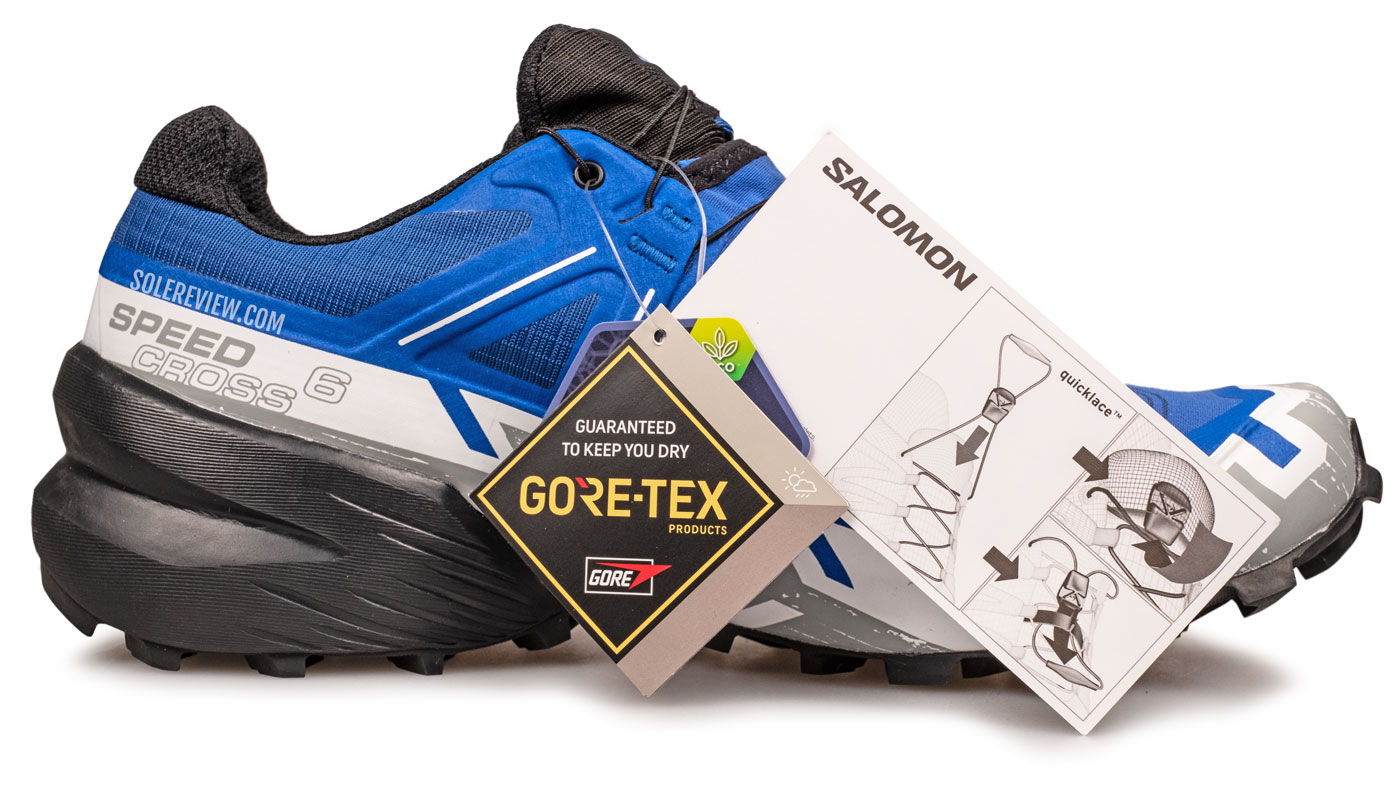
The Salomon Speedcross 6 Gore-Tex is a versatile trail running shoe that can also be used on the road.
The Salomon Speedcross 6 GTX may be a trail running shoe, but it’s comparable to the adidas Ultraboost 22 GTX. Just like the latter, the Speedcross 6 has bungee cord lacing. While it lacks a shroud, the ‘lace garage’ is useful to stow the unwanted ends.
What we love about the Speedcross 6 is how sorted the shoe feels. It’s neither too firm nor too soft, and the upper feels ultra-secure. It works equally well on the road as it does on the trail.
The Speedcross’s outsole doesn’t have the aggressive bite of the Ultraboost, but it proves more versatile on slushy and muddy terrain. The GTX membrane works in sync with the inner gusset to prevent water from entering.
Waterproof running shoes are too many to count, so we’ll end this review with a couple of (other) solid picks. The Brooks Cascadia 16 GTX (our review) is a trail running shoe with a very comfortable ride that is also suitable for the road.
Nike’s Pegasus Trail 4 GTX (our review) has always strived to hit the sweet spot between road and mild off-road use. It delivers on its stated promise with a soft ride and a waterproof upper with a faux gaiter.
Do you own this shoe? Improve this review by sharing your insights – submit a review here.

